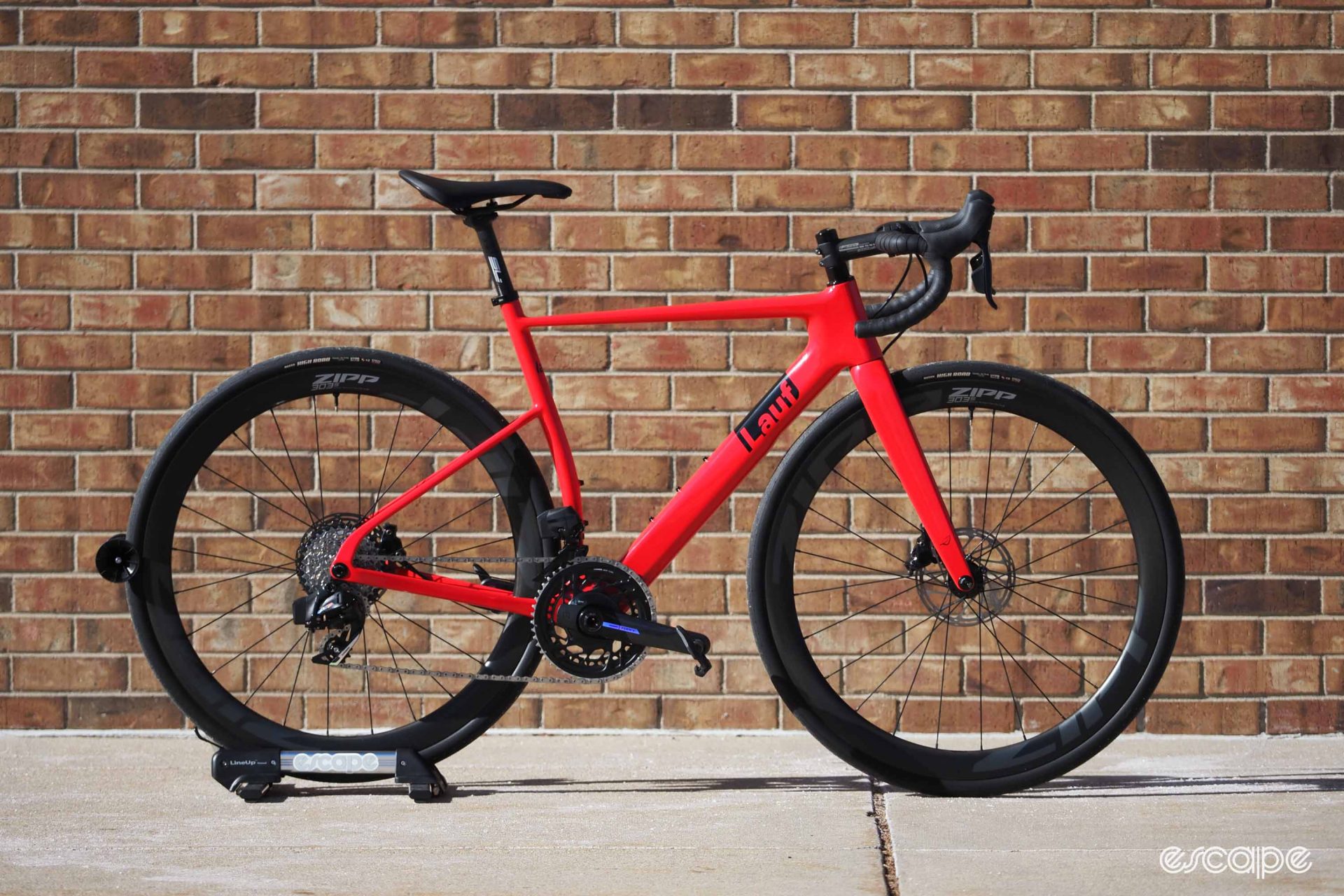Icelandic bicycle brand Lauf has never been afraid to swim upstream, and its first dedicated road bike – the Úthald (Icelandic for “endurance”) – is no different. It’s billed as a performance-oriented machine built with a lightweight and nominally aero carbon fiber frameset. However, Lauf’s interpretation of “performance” also includes an unusually plush ride quality, stock 32 mm-wide tires, and an emphasis on user-serviceability – not to mention Lauf’s now-trademark laid-back seat tube and dramatically dropped seatstays that some may find a little polarizing.
As it turns out, the Úthald feels fast, but perhaps not quite as viscerally explosive as an all-out aero race bike that’s more singularly focused on speed. However, it’s more than happy to gobble up long stretches of tarmac with an enviable combination of both performance and comfort, it’s impressively versatile, and the value is truly superb.
Lauf may very well be going against the grain here. But then again, maybe more of us should be, too.
The short of it: Lauf’s first dedicated road bike, designed to strike a balance between performance and comfort.
Good stuff: Super comfy ride, decently lightweight, stable-but-not-boring handling, reasonably aggressive fit, user-friendly design, solid build quality, fantastic value.
Bad stuff: Not as responsive under power as more traditional race bikes, seat tube angle might be too slack for some, polarizing aesthetics, only offered in five sizes.
Road bikes, Icelandic-style
The Úthald’s carbon fiber frame design isn’t especially radical at first glance, with features such as an aero-profile down tube and head tube, a highly tapered – but only moderately sloping – top tube, dramatically dropped seatstays, and deep-section fork blades with a crown that flows neatly into the front of the frame with integrated drop-in headset bearings.
From a distance, one might even mistake it for a Cannondale SuperSix Evo or any of the other various modern aero road bikes with similar design language. Except that it’s actually very different.
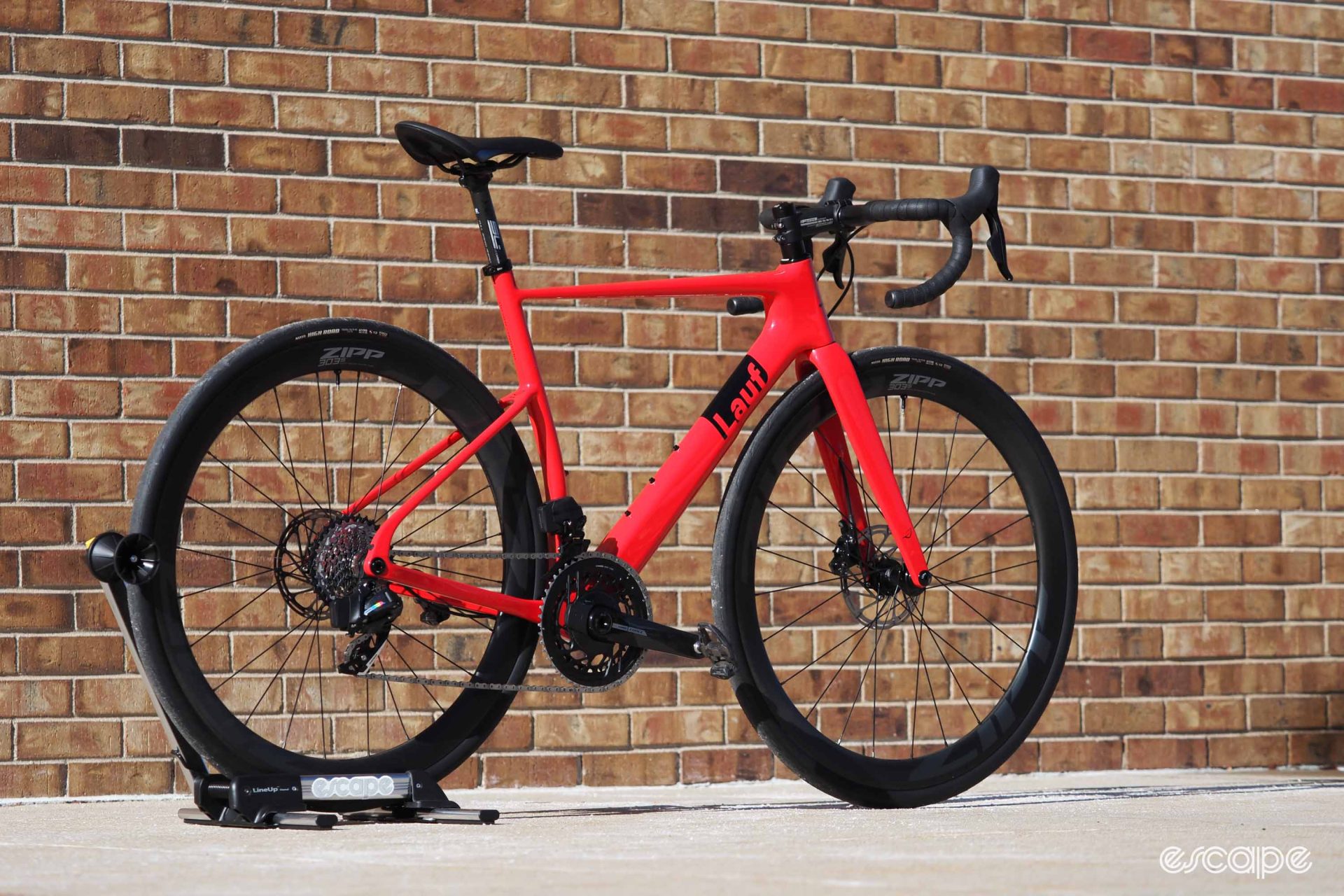
Lauf is pitching the Úthald as a performance road bike, but, again, the company has a somewhat different take on what that means. While most other brands have primarily been focused on the more obvious metrics like aerodynamic efficiency, low weight, and high structural stiffness, Lauf has taken a more balanced approach.
“[The Úthald] is made for all those that want to be fast(er), and eventually want to do some racing, while also having a fast and enjoyable road bike for all the other road riding life throws at us,” Lauf founder and CEO Benedikt Skúlason told me. “Simply put, I guess the essence of this bike is that our goal was to meet the demands of these cyclists better than existing bikes through omitting the outlier demands of WorldTour riders.”
Almost sounds like he’s talking about, like, normal people or something, eh?
It’s not that Lauf is ignoring all of that stuff, but what helps set the Úthald apart is that rider comfort is considered far higher up on the list of priorities than usual.
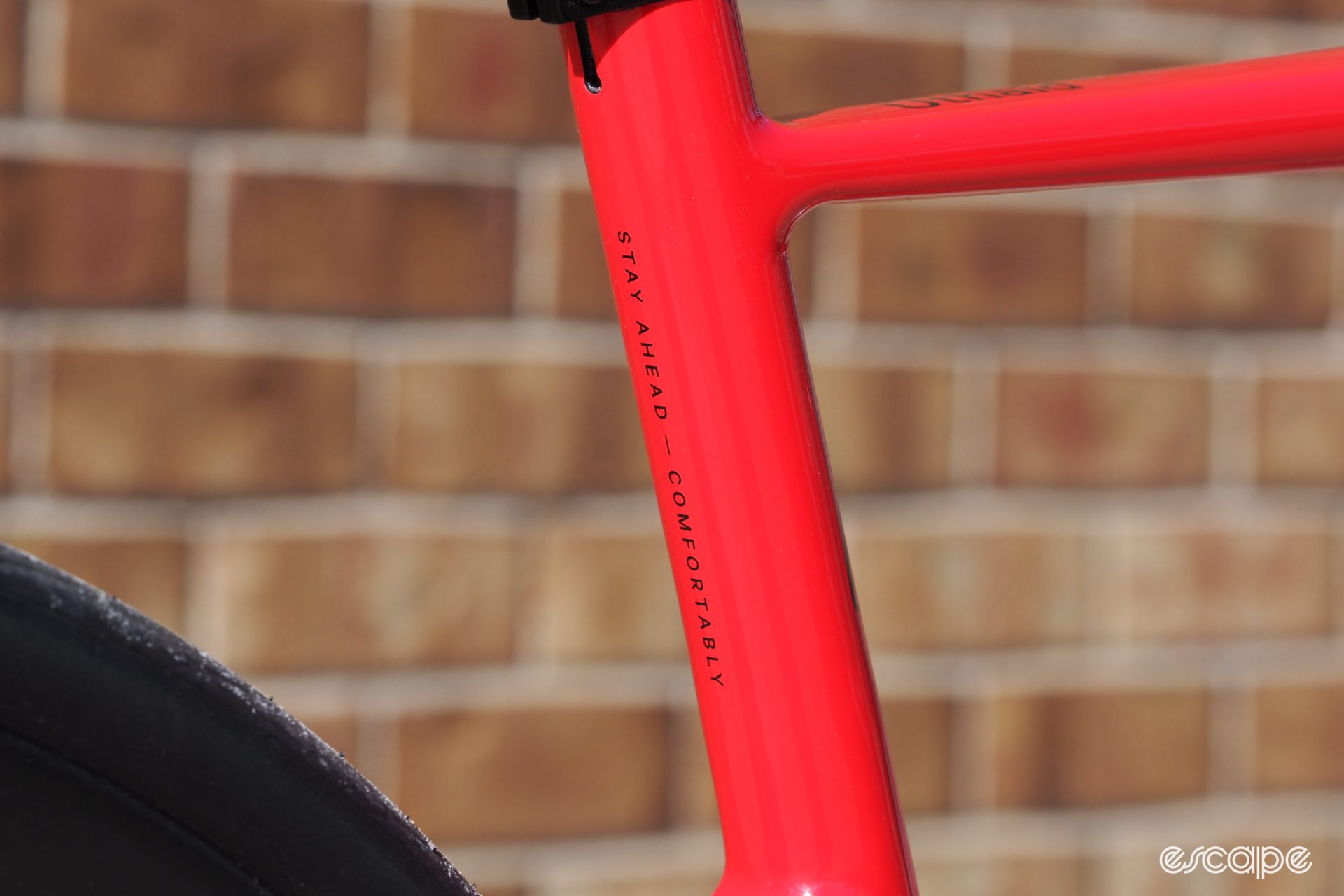
Dropped seatstays on road bikes have become almost standard fare these days, with just about every proponent citing similar motivations for doing so. On the one hand, they’re supposedly more aerodynamic since they present a smaller frontal area than if the stays joined the seat tube up at the top as usual. But on the other, there’s also a claimed comfort benefit since the offset seat cluster helps to promote flex in the seat tube. So the theory goes, when you hit a bump with the rear wheel, the seatstays essentially push forward on the lower section of the seat tube while the rider’s weight on the saddle pulls the top of the seat tube rearward, thus enhancing whatever flex you might already get from the seatpost.
In concept, the Úthald behaves much like the Kingpin system on Cannondale’s Topstone Carbon, except that Lauf is promoting the flex pattern solely through the tube shaping and by including more flexible fibers in that area. In fact, Lauf claims the Úthald’s frame design is so effective that there’s supposedly just as much movement at the saddle as Trek’s IsoSpeed system, only without the additional weight or complexity that comes from physical pivots.
“The sag from a 75 kg / 165 lb person sitting on the saddle of a medium Úthald is ~4.5 mm, measured in a direction straight towards the rear hub,” reads a section of the product page on the Lauf web site. “This means that when you hit that nasty pothole you could easily see travel around 15 mm.”
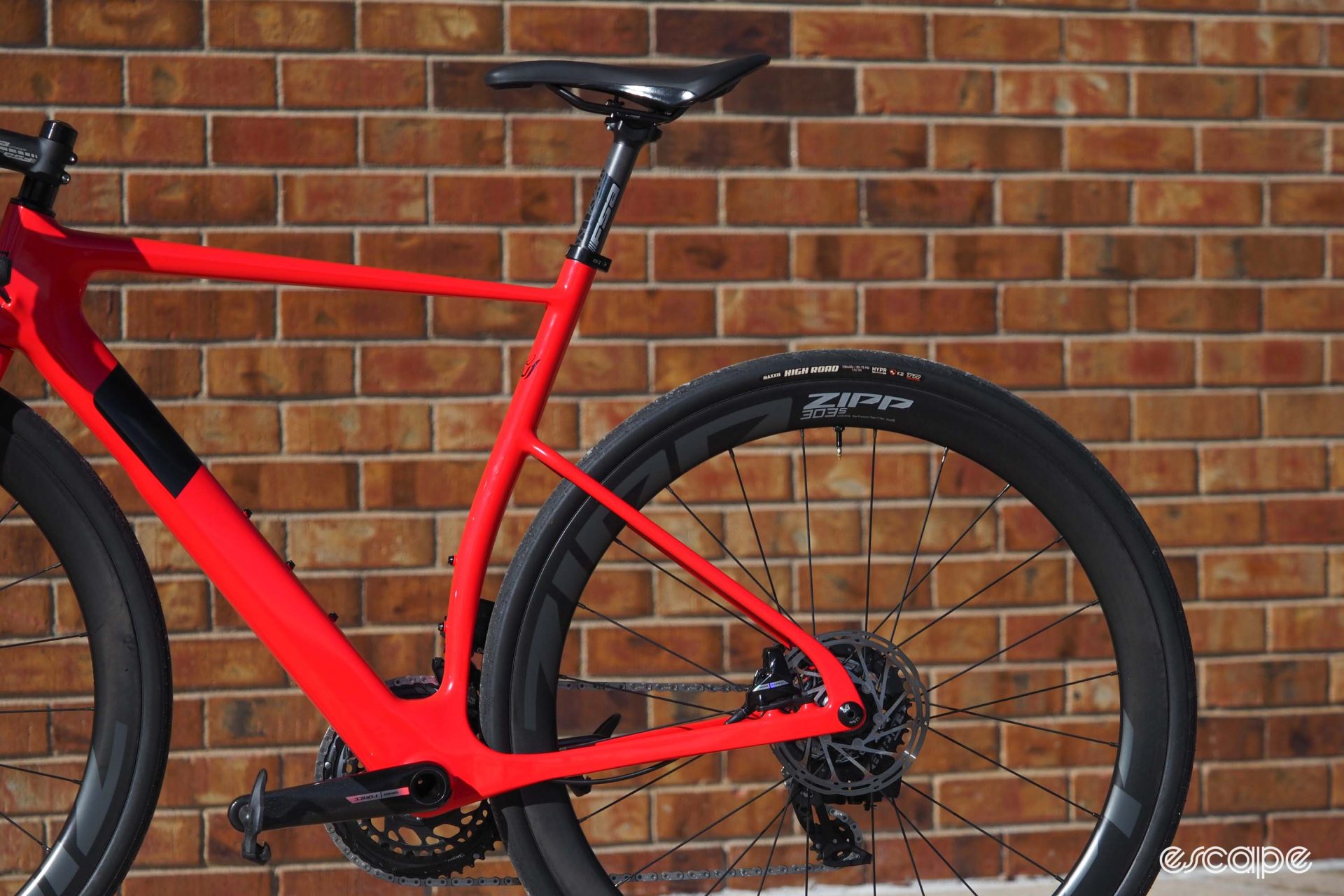
At the other end, Lauf acknowledges that there just isn’t much flex to be extracted from a traditional front triangle. Instead, compliance comes from the Úthald’s new Road Smoothie carbon handlebar, which features more flexible glass fibers in its center section and flattened tops to provide more movement at the hoods or drops, not unlike Giant’s approach with its Defy range of endurance road bikes. Glass fibers are heavier than carbon ones, though, so the Road Smoothie handlebar’s 270-gram claimed figure isn’t exactly class-leading. But realistically speaking, that’s only about 40 or 50 grams over a typical aero carbon bar, and if Lauf is able to provide a tangibly smooth ride at such a modest cost on the scale, that seems pretty reasonable.
More unusual is Lauf’s choice in stock tire sizes for the Úthald. While most of the road world has settled on 28 mm-wide (printed width) tires for high-performance road riding, the Úthald is outfitted with 32 mm ones front and rear – and that’s printed width, not actual width, which is a hair over 33 mm for my test sample when mounted on 23 mm-wide (internal width) Zipp 303 S carbon wheels. There’s room for 35 mm-wide ones, too.
It’s worth noting this would render a stock Úthald – a road bike – illegal for UCI-sanctioned cyclocross races.
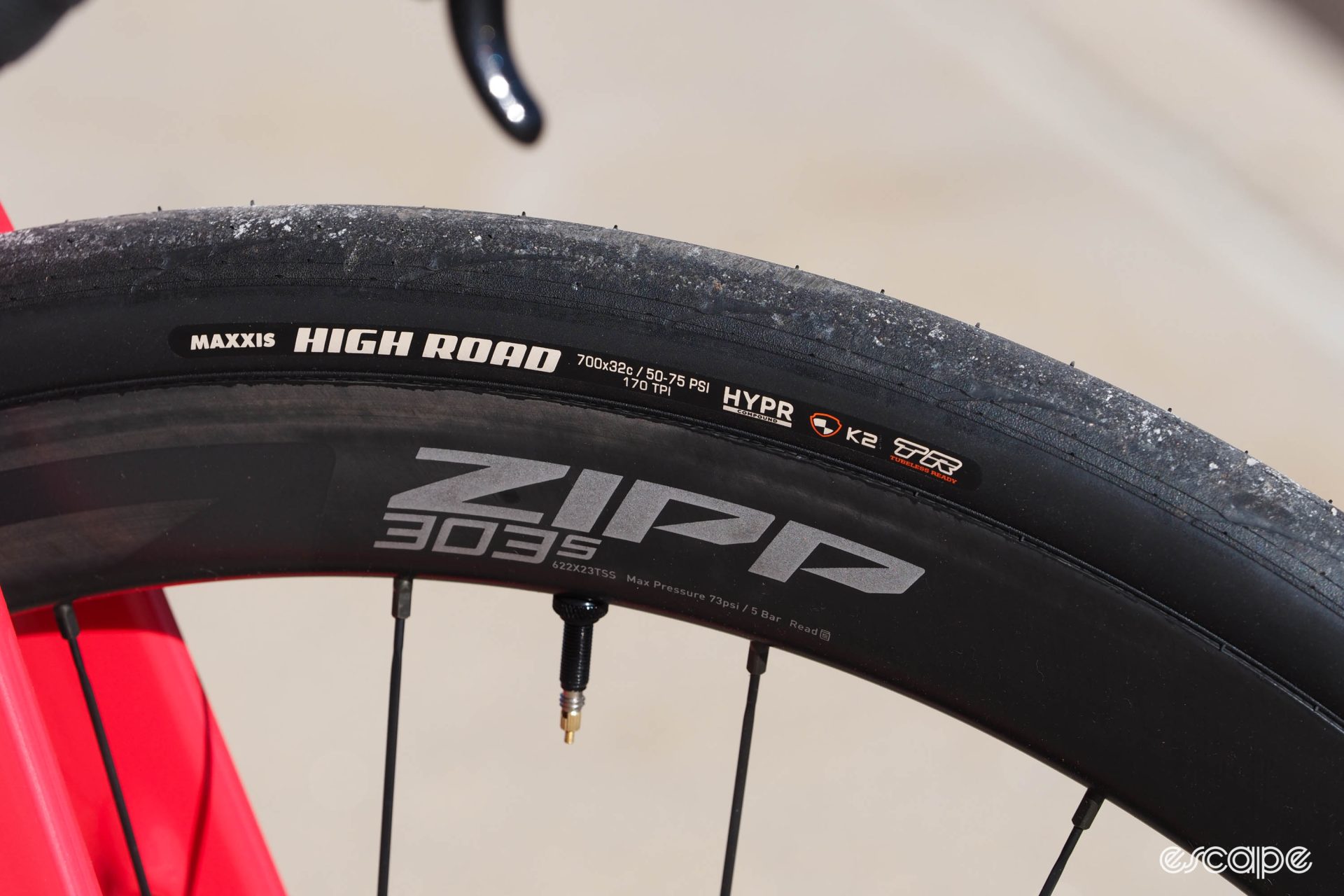
“We feel like the noise, vibrations, and harshness [NVH] of 28/30 mm tires is slowing us down relatively, and also making the ride less enjoyable,” Skúlason said. “Coming from gravel, we are always focused on these vibration losses. So, what others might think feels fast because there is a lot of ‘exciting’ NVH happening, we think feels slow because we associate the NVH with energy loss.”
But what about aerodynamic drag, especially with how much big those tires are relative to the 27 mm external width of those Zipps?
“Air drag is invariably overestimated, as it’s almost always calculated for TT riding with no drafting, and at unrealistic speeds,” Skúlason continued. “Furthermore, the increased confidence when descending on slightly wider tires or navigating twisty roads can quickly save far more seconds than those few involved in the rolling- vs. air-resistance fight. Why not go for even wider tires then? At some point the air resistance goes out of hand, and the bike starts feeling boring to ride; each rider is going to have his own idea for where this point is. We feel like it’s somewhere around the 32 mm mark, and we encourage riders to give it a chance, despite initial impressions of slowness.”
Regardless, Lauf is open about how the Úthald’s aero bona fides are perhaps a little fuzzy. There are some aero elements, but both the seatpost and seat tube are round, and the seatstays don’t strike me as aero at all.
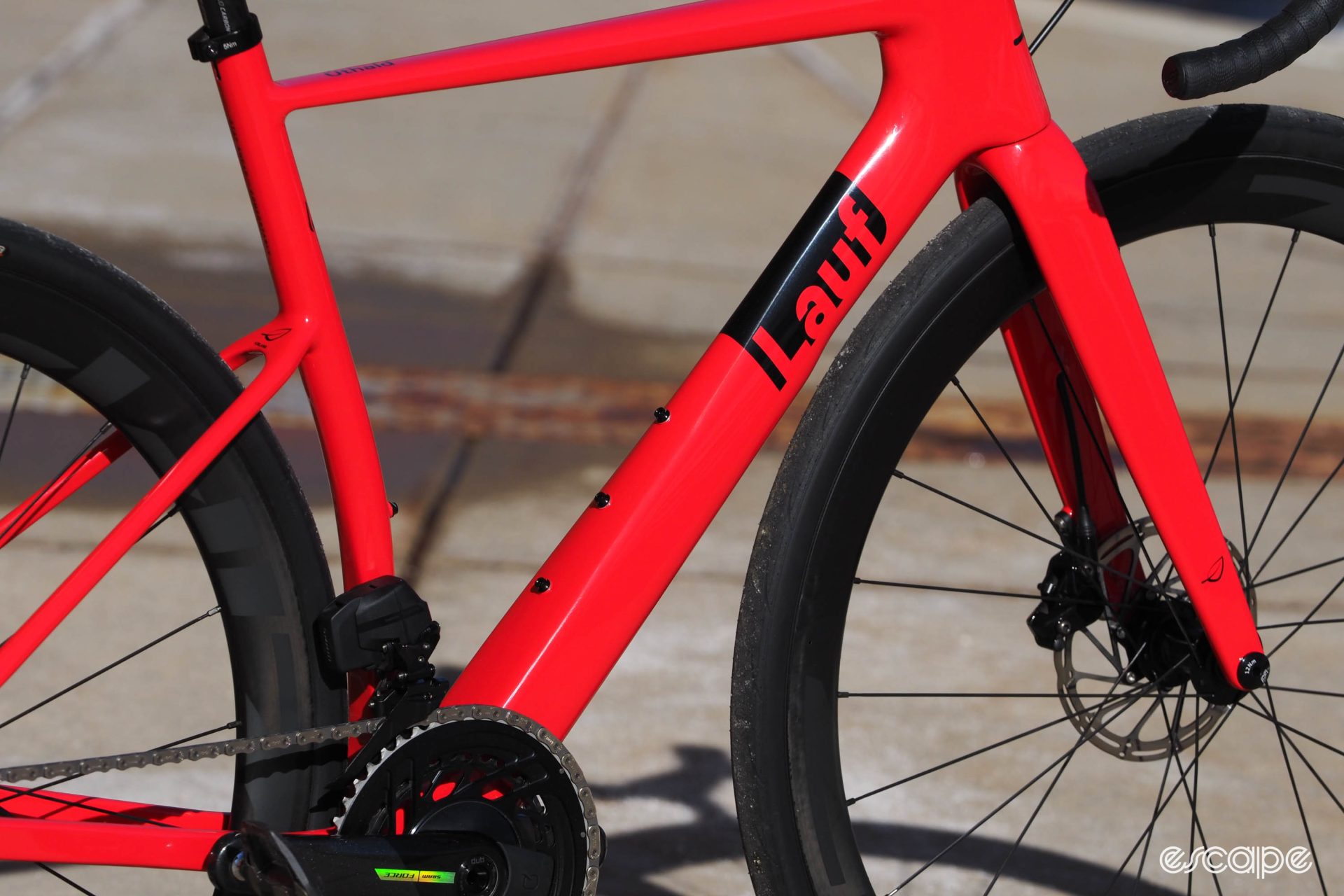
“No, we haven’t put it in a wind tunnel or done CFD on it,” Skúlason said. “Yes, it would be fun and interesting. But also at the same time, it wouldn’t have served much practical purpose for our design process. Aerodynamics were never intended to dictate the design of Úthald; they were intended to be one of the ingredients. We wanted to grab the low-hanging aero gains we could: making frontal areas smaller, increasing the depth of flat-sided sections to better control airflow into a straight-back direction to avoid turbulence; and curving those flat-sided sections very gently inwards airfoil-style to not get premature separation/turbulence.
“In my opinion, engineers often make the mistake of becoming obsessed with some random objective function that then gives them tunnel vision on some aspects of the design. But a bike doesn’t have one simple objective function. There are so many aspects to making a bike, and they often contradict one another, and there often simply isn’t a way to put a meaningful number on those things and how to weigh them against one another. It all depends on so many factors. In the end, I think we can safely say that our Úthald is going to be more aero than most endurance bikes, and less aero than purposely built aero bikes. Where exactly on that scale it is, we don’t know.”
If nothing else, no one is going to be accusing Lauf of overwhelming them with marketing hyperbole. I think I can speak for many in saying that this is a refreshing level of candor from the head of a bicycle brand these days.
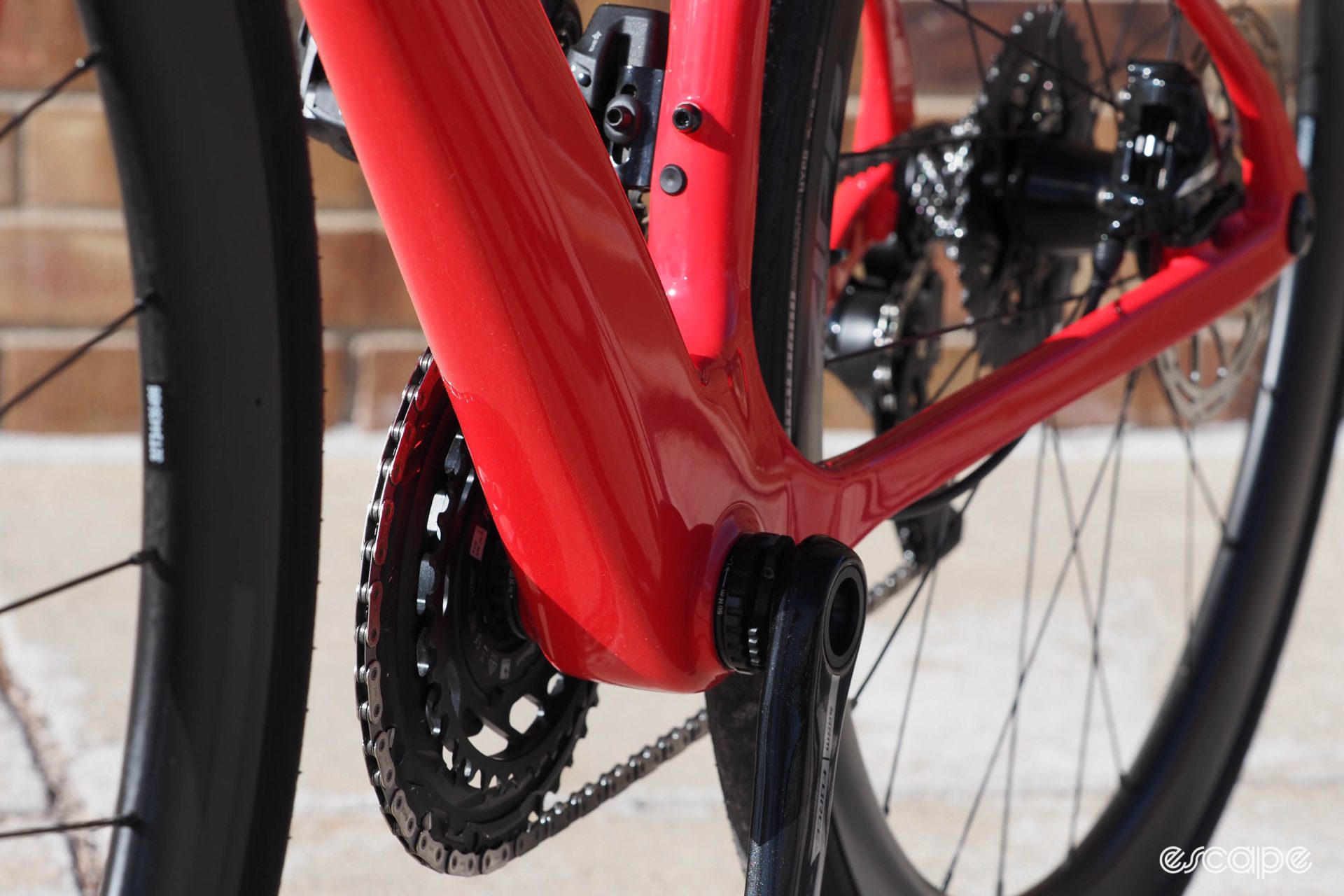
Likewise, Lauf is also upfront about why the Úthald is a little heavier than most top-end road frames: it’s built with more “normal” carbon fibers instead of the fancier higher-modulus stuff in order to increase the frame’s impact durability. Nevertheless, it’s not bad on the scale. Claimed weight for a medium Úthald frame is 985 g – 130 of which is supposedly paint – and a matching fork comes in at 365 g.
Lauf’s approach to more practical elements like ease of service and durability seems crafted with DIYers and shop mechanics in mind, with features like a standard English-threaded bottom bracket shell, a round 27.2 mm-diameter seatpost secured by a conventional aluminum external collar, and UDH-compatible rear dropouts for easier replacement sourcing and a bit of future-proofing. Lauf has also shunned industry trends with partially external cable routing, with one port located on the down tube just behind the head tube, and the other at the top of the fork crown. Even better, the rear brake hose is fully guided from end-to-end with a molded-in carbon fiber tube, just like a growing number of modern mountain bikes. Like the medium-modulus carbon fibers, this adds a few grams, but it also makes the Úthald easier to live with and maintain.
It’s not like Lauf is run by a bunch of Luddites, though. Fully acknowledging modern trends, the Úthald is only compatible with electronic drivetrains – and wireless (or at least partially wireless) ones at that. You won’t find fender mounts at either end, though.
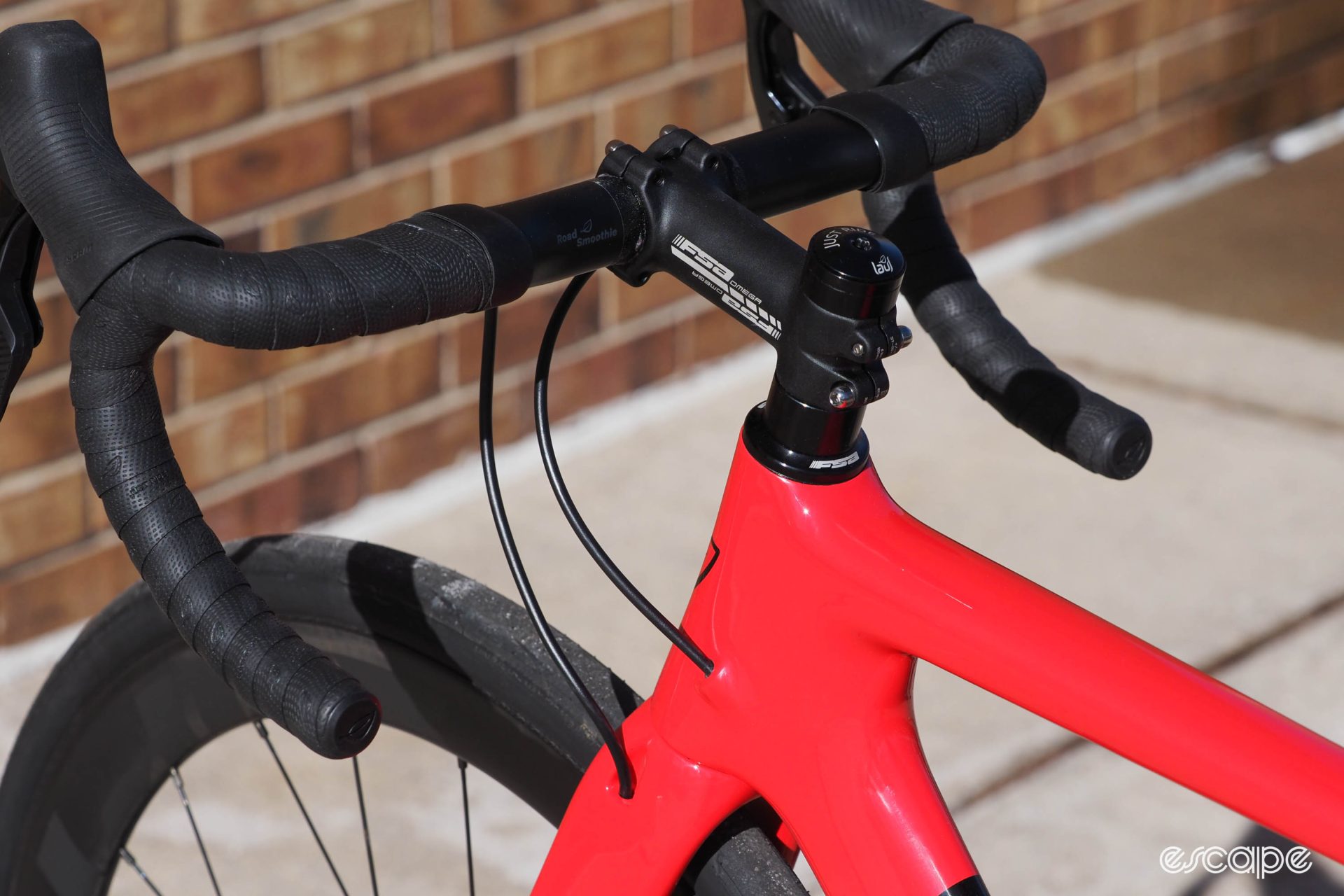
As we’ve noticed in previous experiences with Lauf bikes, pricing on the Úthald is very impressive, thanks in large part to the company’s consumer-direct business model. Lauf is only offering the Úthald in two complete builds for now, both in five sizes and four colors. The Úthald Weekend Warrior Wireless is just US$3,500 with a SRAM Rival AXS 2×12 groupset and DT Swiss E 1800 Spline db 23 aluminum clincher wheels, while the higher-end Race Wireless comes with a SRAM Force AXS 2×12 groupset and Zipp 303 S carbon aero clinchers for US$4,700. Interestingly considering its Icelandic origins, Lauf only quotes official retail prices in US currency.
Keep in mind that both builds include SRAM power meter cranks, too – a single-sided spindle-based one for the Weekend Warrior Wireless, and a dual-sided spider-based one for the Race Wireless. Bare framesets aren’t currently available, but I’d imagine that’ll change sooner than later.
I tested the higher-end Race Wireless model, which came in at 7.89 kg (17.39 lb, actual weight) for a size small, set up tubeless, and without pedals or accessories – bang on with the claimed figures.
Different is … better?
Before I get into the ride report of the Lauf Úthald, it’s worth discussing the assembly quality since Lauf sells these things consumer-direct, meaning they show up in a box on your doorstep supposedly fully tuned with only minimal assembly required before you get out for a spin.
Overall, I’d give Lauf high marks. The bike arrived intact and unscathed, thoroughly protected with an array of carefully constructed recyclable materials consisting almost entirely of corrugated cardboard. Things weren’t completely perfect in terms of the tune – the front rotor was slightly warped and both brake calipers needed very slight adjustments – but there was nothing required otherwise, and certainly nothing major. Shifting was dead-on, the wheels were already set up tubeless, and the battery in the power meter was ready to go (normally there’s a little plastic tab that needs to be removed). Heck, the seat tube even arrived with carbon paste pre-applied inside.
Pretty good, I’d say.
Out on the road, the Úthald is indeed incredibly smooth, like everything is taken down a notch or two in terms of what your mind thinks you’re about to experience vs. what actually happens. Washboarded dirt roads feel surprisingly manageable instead of blurring your vision. Coarse tarmac feels like freshly-laid blacktop. And smooth asphalt? That ends up feeling like … well, nothing.
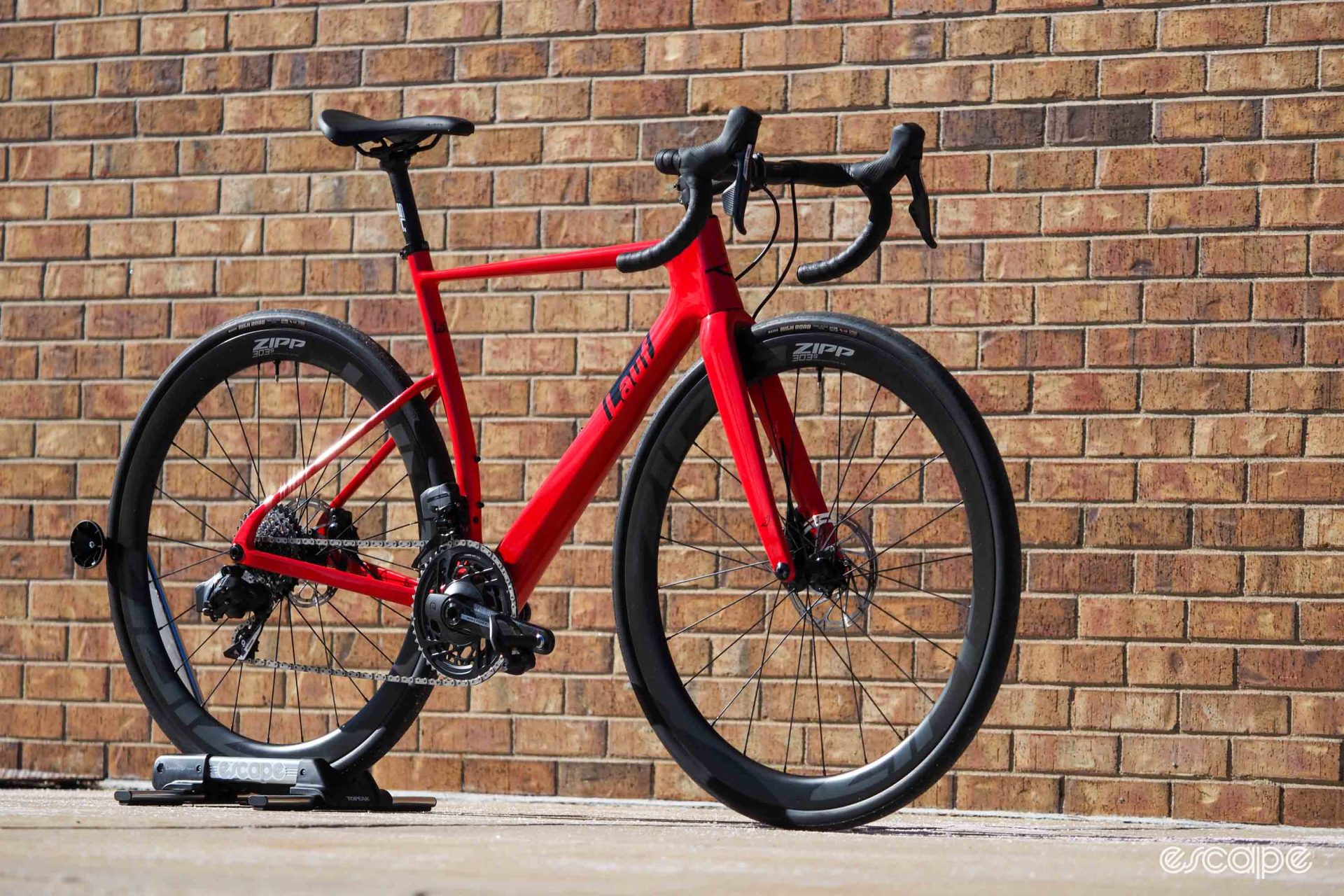
There isn’t any noticeable bounciness at the saddle when riding on those surfaces, either – at least under my 73 kg (161 lb) body weight and at my 700 mm saddle height – nor is there any noticeable pedal-induced movement like I’ve occasionally experienced with more mechanically based pseudo-suspension systems. That said, a ride with the tires inflated to higher-than-normal pressures suggests the Úthald’s flexible frame design is more effective on lower-frequency/higher-amplitude impacts than vibrations. That’s ok, however, since no one should be riding 32 mm-wide tires at 80 psi, anyway. At more appropriate pressures (I typically ran these 53/54 psi front/rear), the tires handle the road buzz while the frame takes care of the rest, and most will be none the wiser. The two work well together.
I was initially concerned about how the nearly-level top tube didn’t leave that much seatpost exposed, particularly given how effective seatpost flex is for rider comfort. But it turns out that doesn’t matter much given the design of the frame, and in fact, you can see the frame flex just by leaning your body weight on the saddle.
Interestingly, the ride quality of the Úthald might have actually been worse with a lower top tube and more exposed seatpost. According to Skúlason, the bump-induced seat tube flex is supposedly more reliant on the separation between the top tube and the seatstays, and a quick test on the road confirmed this.
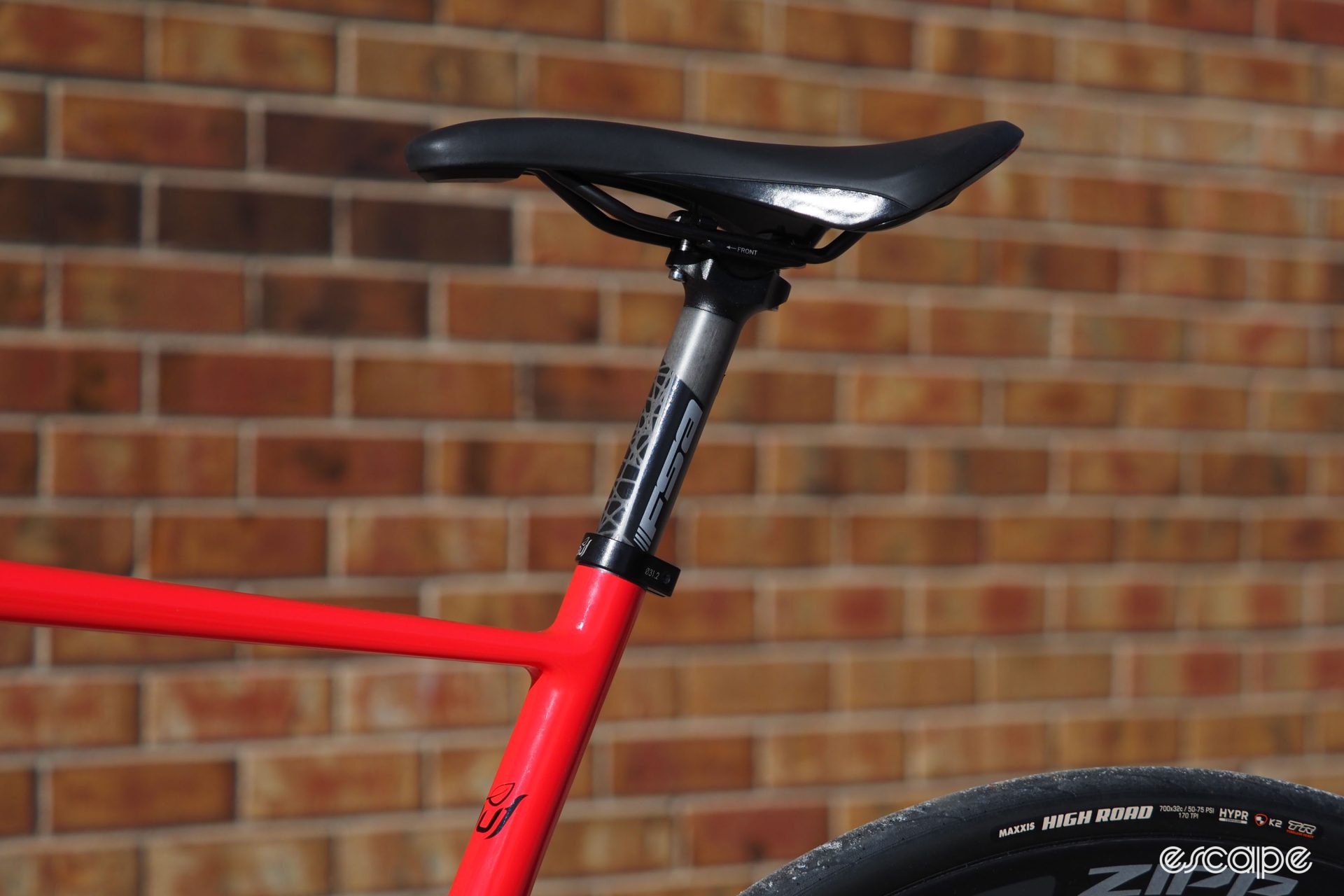
Swapping to a Thomson aluminum seatpost – widely regarded as one of the stiffest around – resulted in little perceivable change in ride quality, but what did have a tangible effect was trimming the stock seatpost to minimize how much of the shaft was inside the frame since that could restrict the seat tube from flexing as intended.
As I’ve often noted on bikes with built-in comfort features, the front end of the Úthald isn’t as cushy as the rear, although the disparity is smaller than I’d anticipated. Lauf has done an good job of getting the flex pattern of the Road Smoothie handlebar to be similar to the rear end, and without turning the front triangle of the bike into mush or totally killing the road feel. In fact, the thought went through my head more than once during testing that I wouldn’t mind having this bar on the front of my personal Allied Alfa Allroad since it’d incur a smaller weight penalty than the suspension stem I’m using on it currently.
Ok, so the Úthald is comfy. But does this comfort come at the expense of speed? Er … maybe. Lauf seems to have achieved its primary objective in that it’s very easy to go fast on the Úthald, and especially so on crummier road surfaces where you might otherwise eventually start to feel fatigued or just have a hard time maintaining a stable position to keep putting power down. I eventually started thinking of it in the same way that a full-suspension cross-country bike is often faster than a hardtail – just stay seated and pedal your brains out.
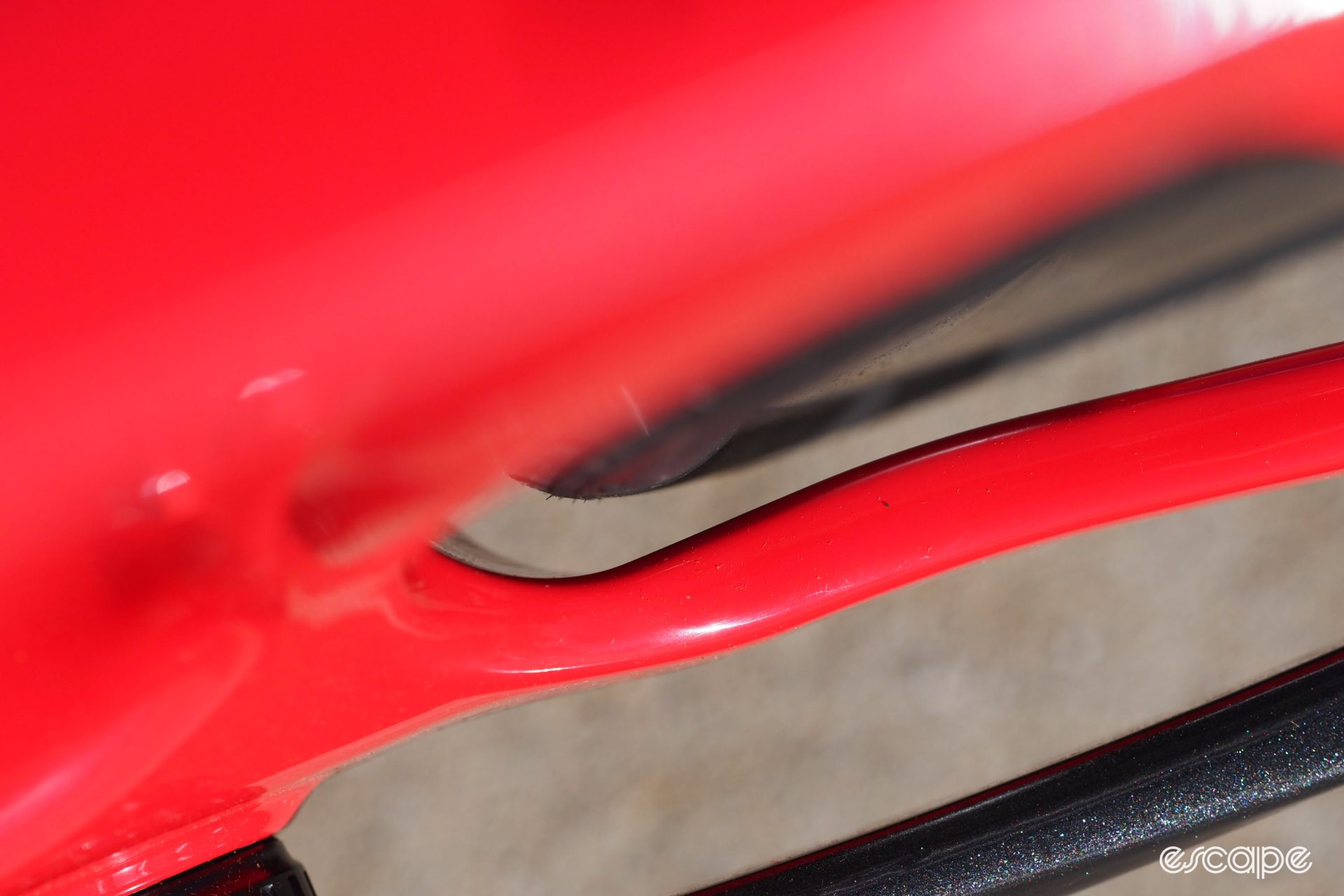
But the degree to which that level of comfort is important will depend strongly on where you’re riding, and most likely, on who’s doing the riding.
I’m in full agreement with Lauf that a more flexible frame can be faster than a stiffer one on less-than-ideal surfaces, but I think it’s a bit of a different story when the surfaces are smooth, or when heading uphill. The Úthald frame feels a little soft under power, and it’s especially noticeable when climbing out of the saddle or sprinting. It just isn’t as snappy or responsive as a more traditional race bike, and it’s lacking in that right now sense of urgency you get from a stiffer chassis. Is that bad? And is it actually slower? I can’t say, but it’s something potential buyers should be aware of regardless, particularly if you tend to stick to smoother surfaces or just like how a stiffer platform feels underneath you.
Keep in mind, though, that part of the Úthald’s milder manners can be improved by swapping to smaller tires. A set of 28s is not only lighter, but they also improve the aerodynamic efficiency a bit and speed up the handling with only a modest hit in ride comfort.
And what about the aero thing? I can’t really say there, either. I get Lauf’s argument about aerodynamic performance when riding solo vs. in a group, but that’s assuming you’re in a group (or at least behind one other person). And even when you’re tucked in someone’s draft, it’s not like there’s no aerodynamic drag. There’s just less of it, meaning a bike that’s more aerodynamic will still require less power to propel than one that’s less so. And what if you primarily ride by yourself like I do? I agree that bike performance should be about more than prioritizing one main metric, but if your primary goal is going fast – whether racing or otherwise – I still believe most riders will be able to hit and maintain higher speeds on a properly aero machine. Maybe someday Lauf will do some objective testing to reinforce its position, but until then, that’s my hunch and I’m sticking to it.
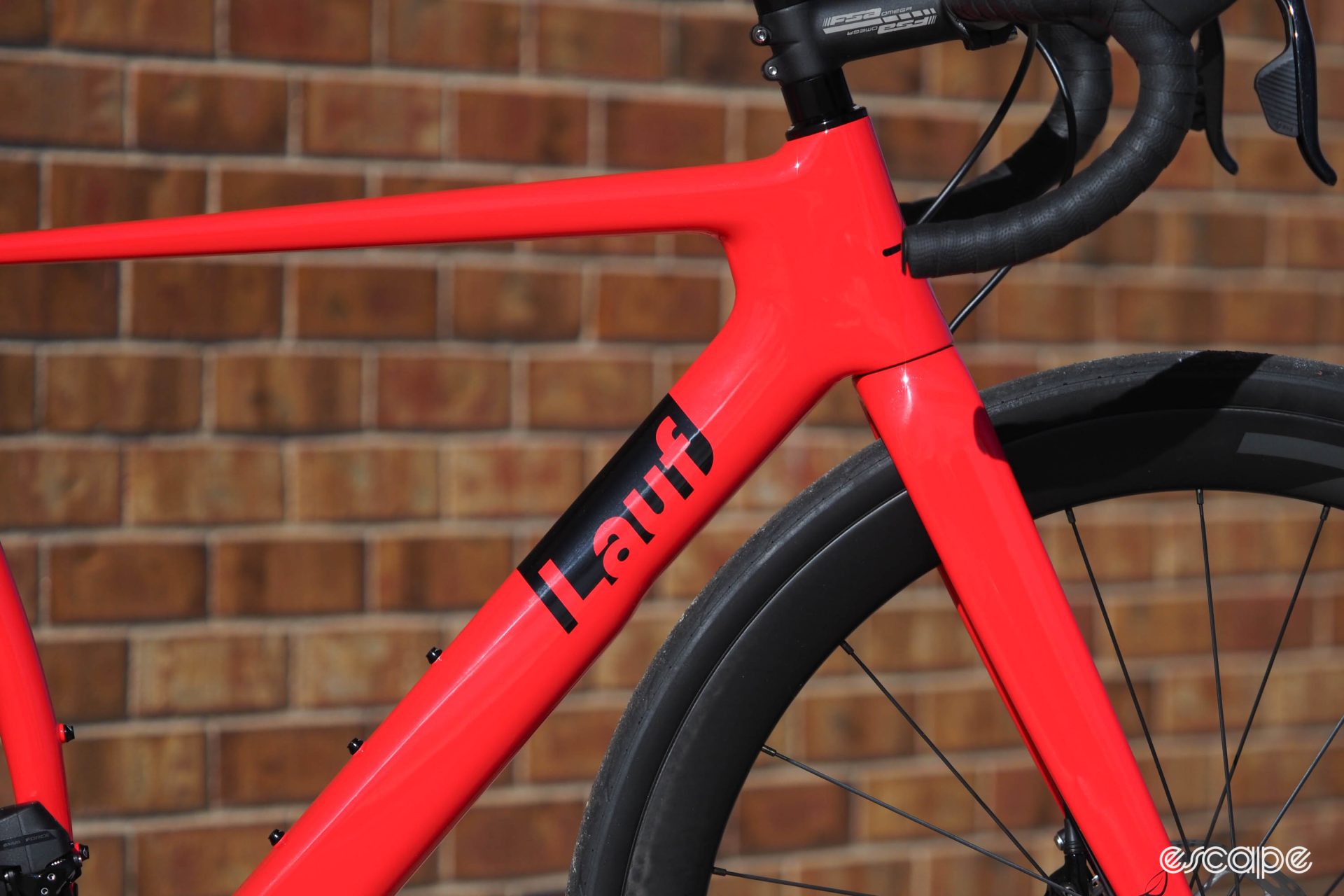
Even in terms of handling, the Úthald is a little controversial. Similar to how Lauf believes rider comfort is an under-appreciated factor in performance, the Úthald is equipped with unusually stable handling for what’s supposed to be a go-fast machine. Moreover, each of the five frame sizes gets the same 64-mm trail dimension. The steering is less darty and reactive than most traditional race bikes, but not quite to the point of being lazy.
Much like the chassis stiffness, though, it’s not a cut-and-dried argument that the Úthald’s more stable handling isn’t as good as quicker manners. The front end of the Úthald doesn’t dive for the apex of corners like a Specialized Tarmac or Giant TCR, but I’d be lying if I said I felt like it ever held me back. In fact, when you combine the added traction and more planted feeling of those big tires and the more flexible frame with that more settled-feeling steering, it’s laughably easy to bomb descents on this thing. You’re going fast, but it also feels like things are slowed down a bit – and I mean that in a good way.
As for the fit, Lauf thankfully hasn’t done anything crazy here as both the stack and reach dimensions seem about right for a proper performance-minded road bike – maybe just a hair taller up front than some might prefer, but I think most riders will be able to achieve a suitably aggressive position. Lauf has thankfully opted for a low-profile upper headset cover, too, so you can still get pretty slammed should you wish.
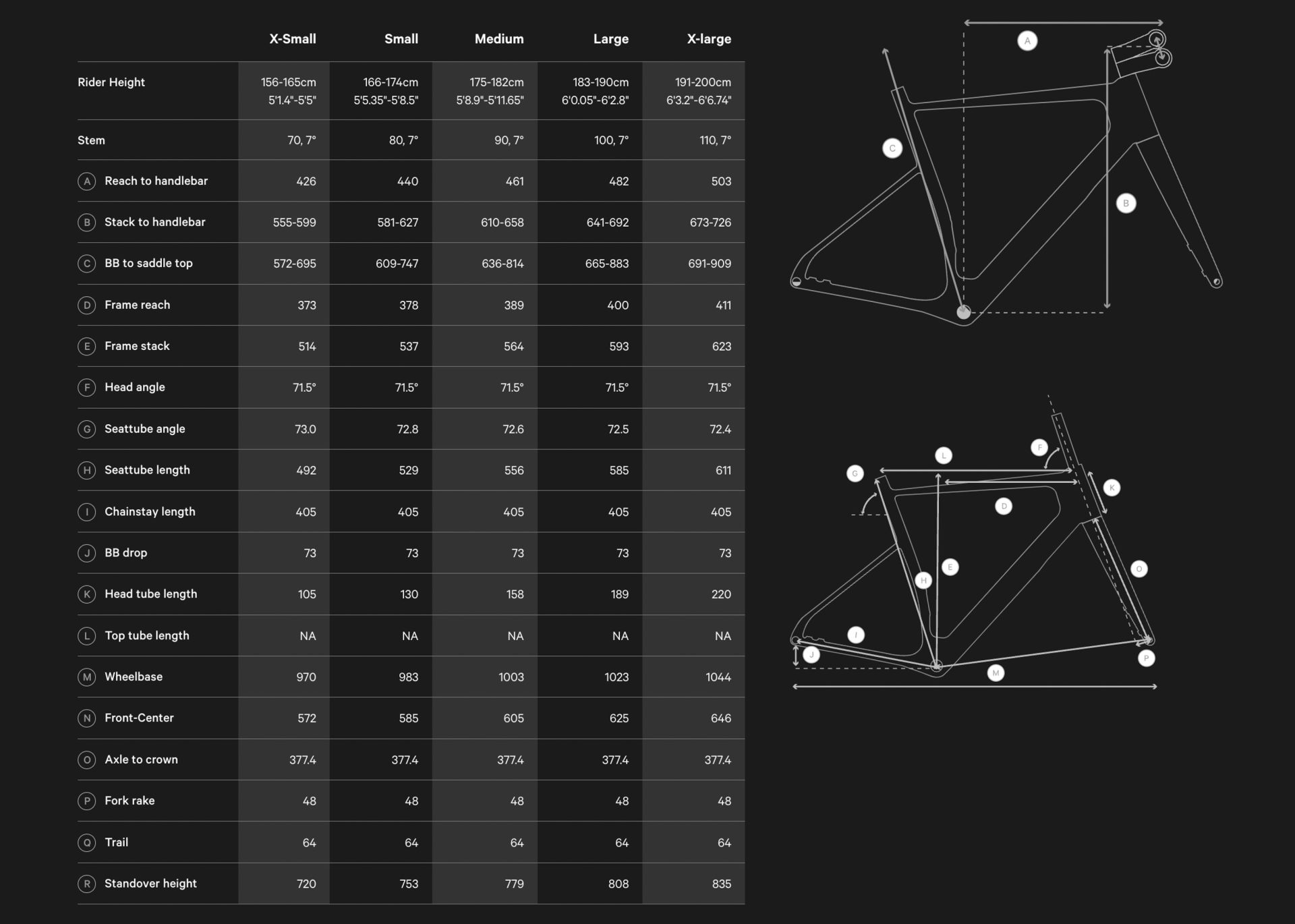
I’m less excited about the unusually slack seat tube, however. Much as 3T has done, Lauf says this yields a perfectly normal saddle setback when used with a zero-offset seatpost, and also saves a bit of weight as compared to a laidback one. That may be, but saddle positions are trending more forward than they have in years past, and while the effective seat tube angle isn’t too outrageous at 72.4-73.0°, depending on size, the actual seat tube angle will change more dramatically depending on your saddle height. I was able to get my saddle set up the way I wanted, but only just barely.
Finally, let’s talk about aesthetics. Generally speaking, I find the Úthald to look better in person than it presents in pictures: all business and no fluff. I’m pretty ambivalent about dropped seatstays at this point, but the curve at the base of the seat tube is harder to look past. It may very well improve tire clearance a little, but that arc looks a little incongruous with the mostly straight lines found elsewhere. Something about the jumble of shapes at the bottom bracket in general just doesn’t look right to me, either. And although I’m generally in favor of more minimal logos, there’s a fine line between elegant and simple, and I think the graphics on the Úthald stray a little too far into the latter. To each their own.
Spec notes
I’ve got almost nothing bad to say about how Lauf has outfitted this thing, though. It’s a killer value, and aside from the house-brand handlebar, all of the components come from a recognizable label with a solid reputation.
The SRAM Force AXS wireless electronic groupset is as excellent as I’ve come to expect, and the combination of the 48/35T chainrings and 10-36T cassette provides ample range without skimping at either end or leaving you with any big ratio jumps in the middle. I maybe would have preferred some remote shifters on the bar tops, but that’s a personal preference thing so I won’t hold that against Lauf.

The Zipp 303 S wheels? They’re decently light, appropriately wide, and competitively aerodynamic. The hookless format will invariably turn some people away, but when combined with the lower pressures you should be using with those big Maxxis High Road tubeless clinchers, there’s less reason for concern. And while aero weenies will scoff at the lightbulb effect of the 33 mm actual tire width on those 27 mm-wide rims, it’s still better than a box-section rim.
I’ve already mentioned the comfort aspect of that Lauf Road Smoothie handlebar, but it’s worth pointing out how nice they are to hold, too (at least for me). Unlike most flattened bars, the forward edge of the tops is quite squared off, which probably isn’t the best for aerodynamic efficiency, but fills the backs of your fingers so, so nicely. Kudos to Lauf to paying attention to trends in widths – my small-sized frame came with 38 cm-wide bars – and the semi-anatomic bend felt just right. I wouldn’t have minded a hint of flare (who am I???), but there’s plenty of room in the clamp area to mount accessories.
As for the saddle … well, as always, that’s a personal preference thing, and my preference would have been for something else as the Fizik Aliante R5’s curved profile just didn’t agree with me. But hey, at this price, there should hopefully be room left over in the budget to get whatever you’d like.
Who’s Laufing now?
Lauf makes a strong case that a bike like the Úthald makes more sense for everyday riders who want to (and enjoy) going fast, but don’t necessarily want to be overly limited in where they’re able to go fast, or how they’re going to feel by the end of a long and spirited day out. It’s impressively comfortable, decently lightweight, and quite versatile – all without any weird proprietary parts or gimmicks – while also offering exceptionally good value.
That said, I still think it’d be more accurate to describe it as something ideally suited for fast cruising than sprinting for finish line or city limits signs, and as much as I’ve thoroughly enjoyed my time on the Úthald, I don’t think it’ll be the right bike for more competition-minded buyers. Riders more keenly focused on all-out speed who will mostly be on decently paved roads will likely be better served by a more traditional aero road racing model. Comfort and stability are important, yes, but speed is still speed, and as much as Lauf might prefer otherwise, I don’t think the Úthald will be as hard-edged as some might want.
There’s nothing wrong with that, of course, and if anything, I think Lauf should be applauded for its refreshing honesty in what the Úthald is – and what it isn’t. Horses for courses and all that, but I don’t think many will disagree with me that it’d be nice to see more of this in general.
More information can be found at www.laufcycles.com.
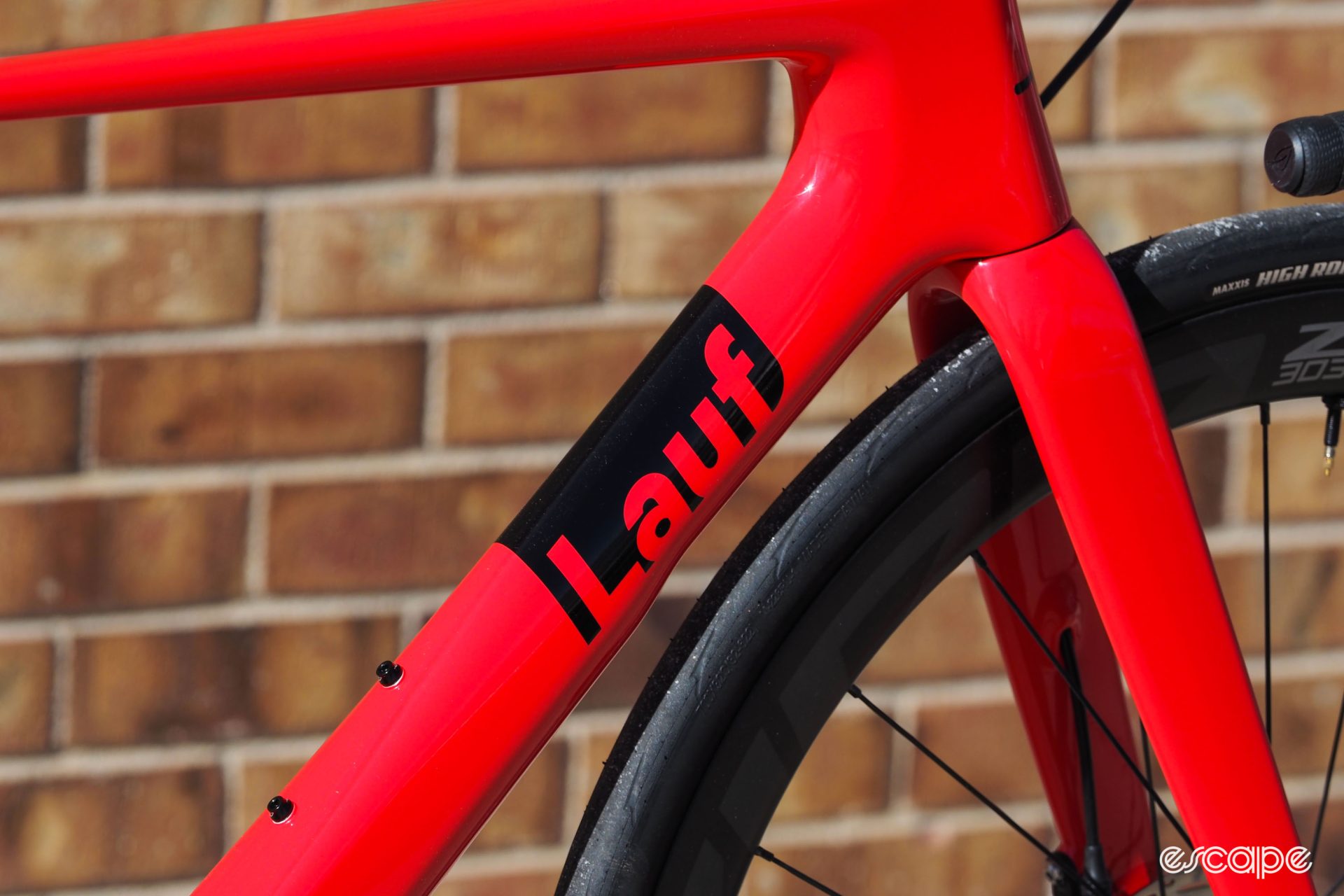
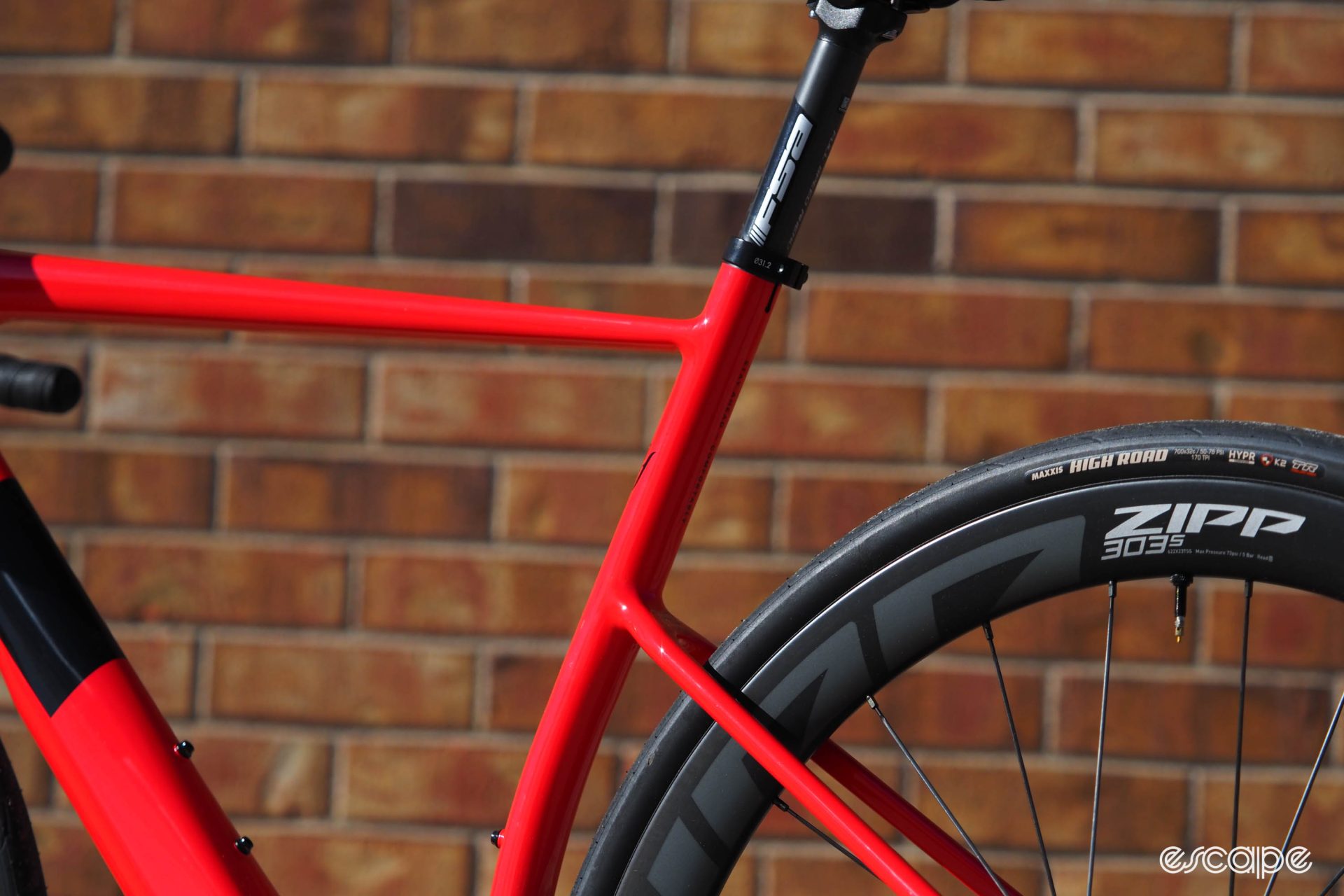
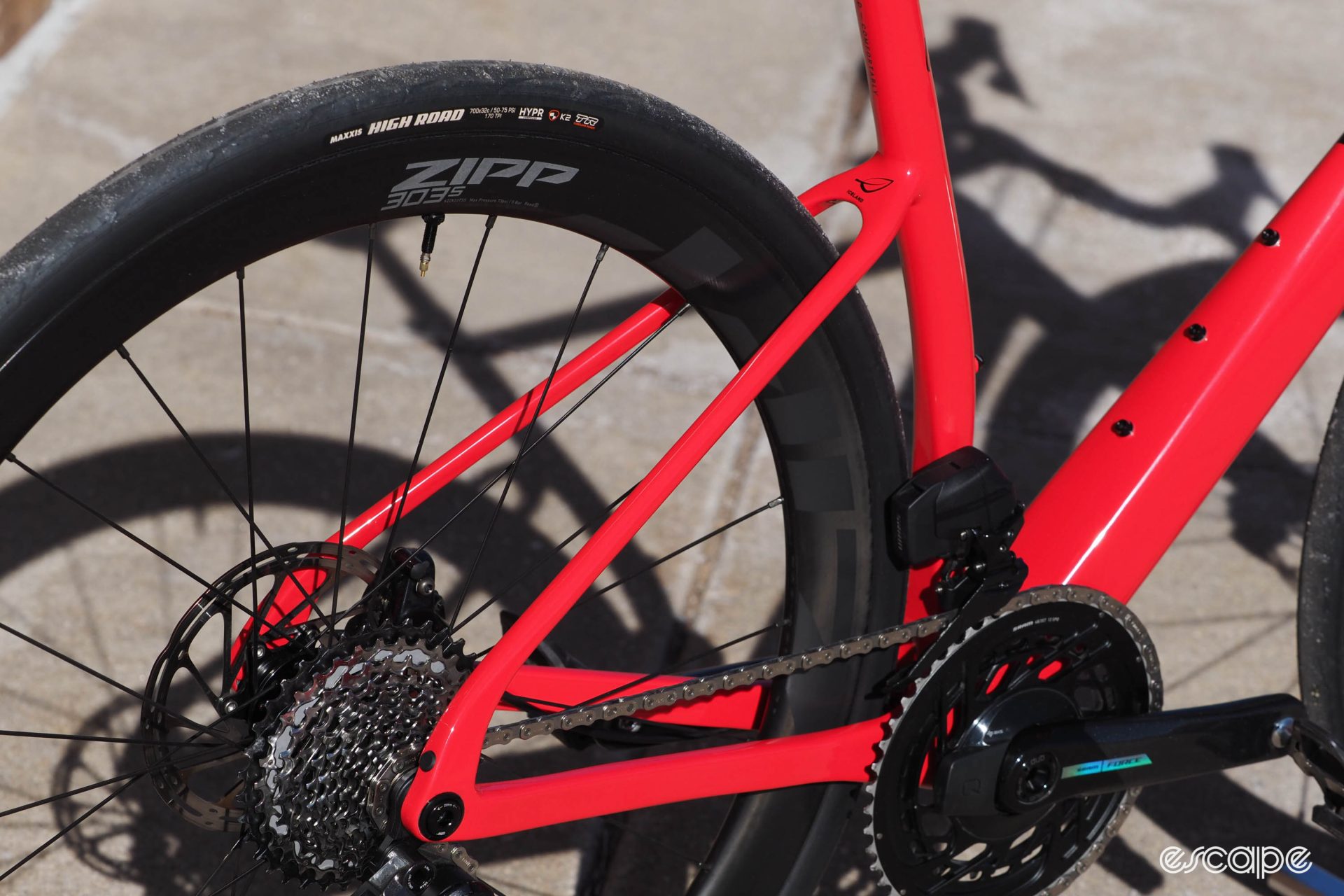
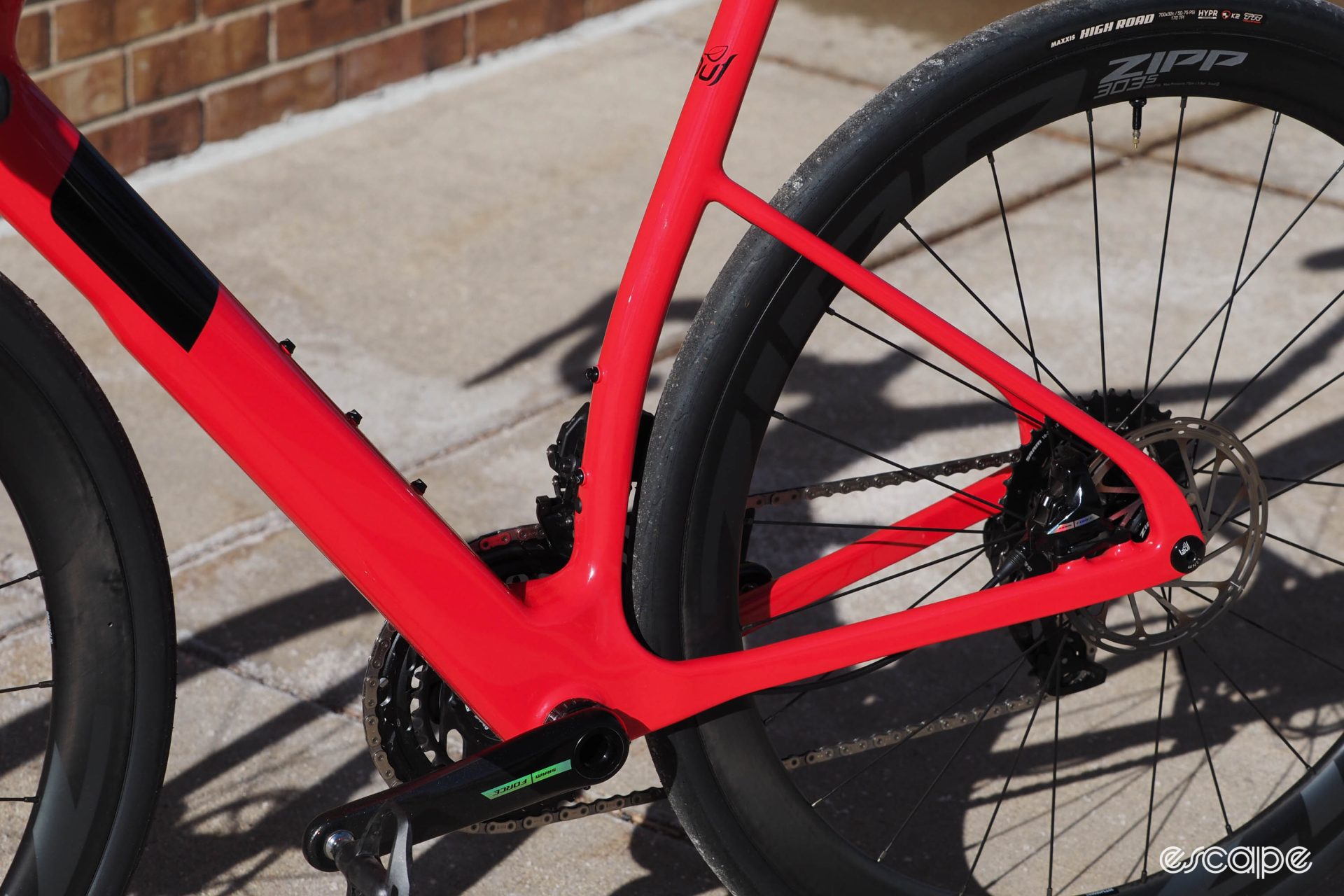
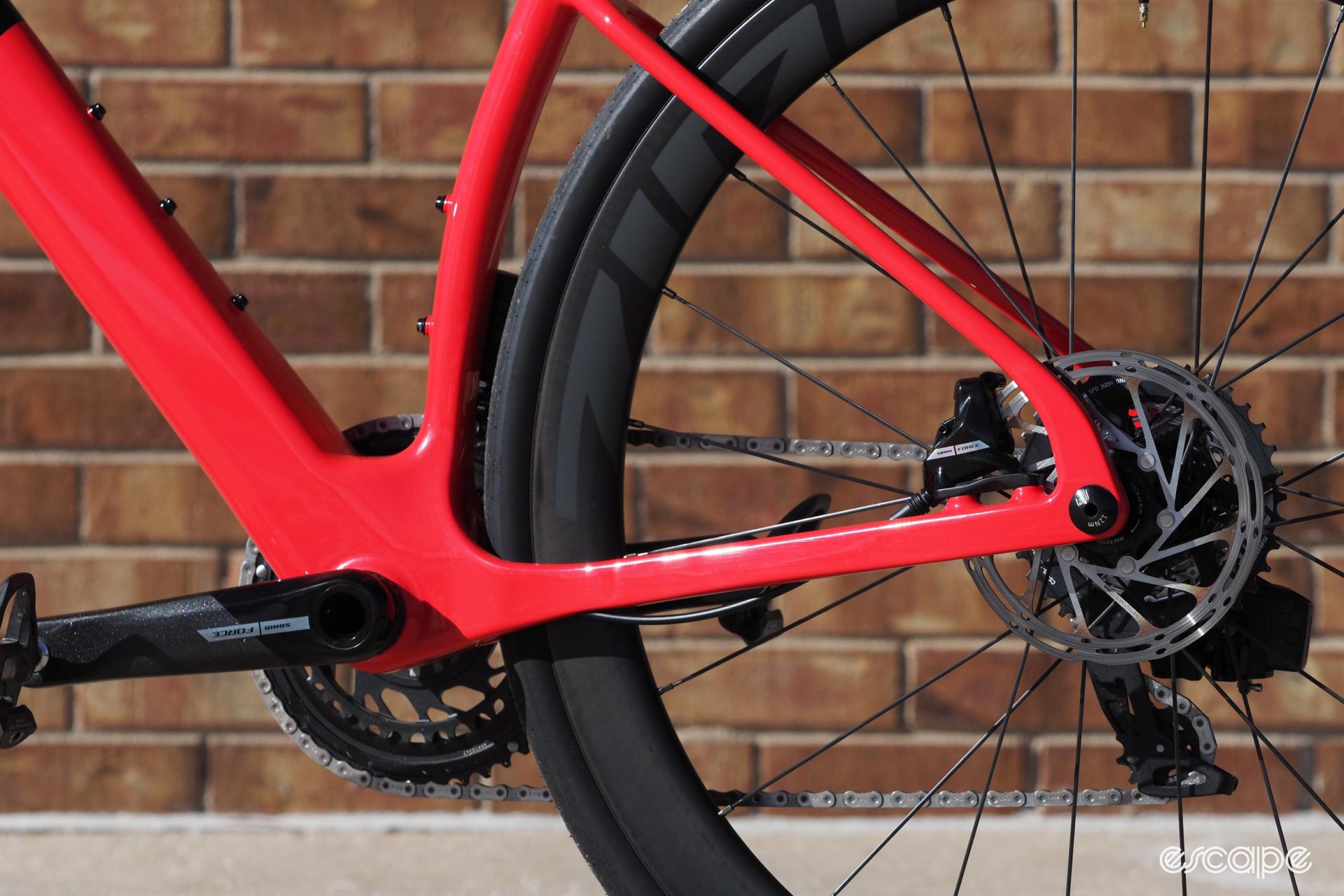
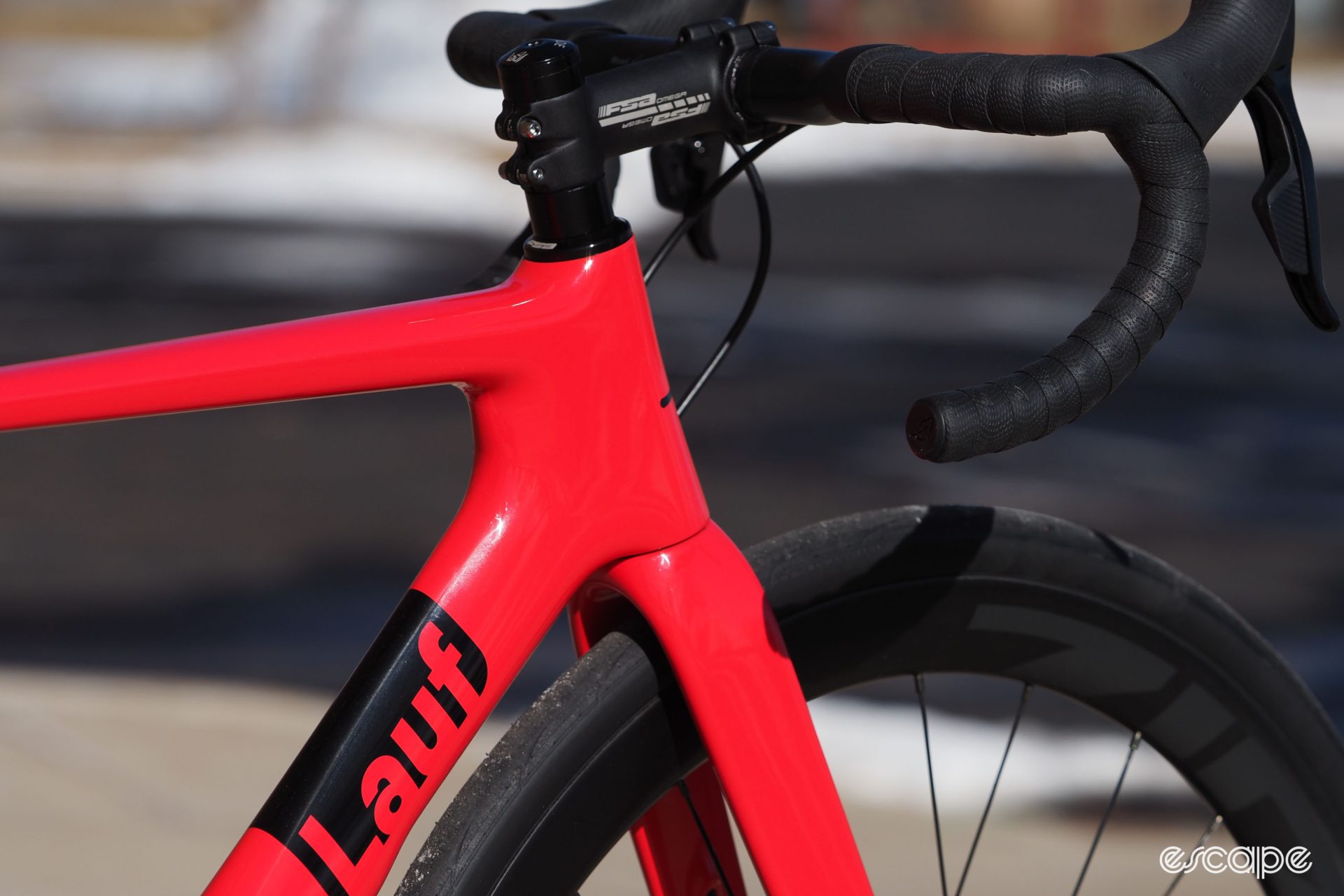

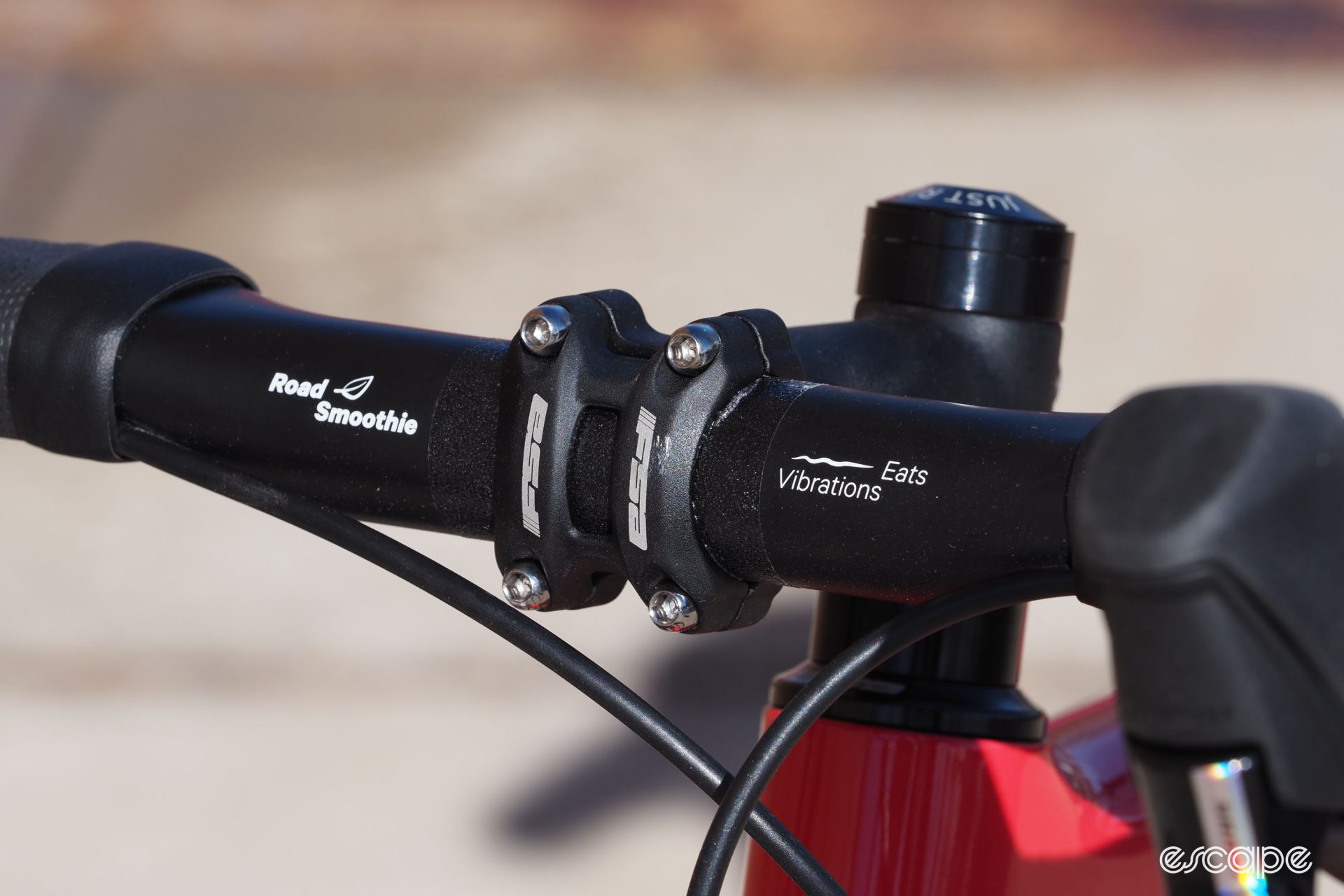
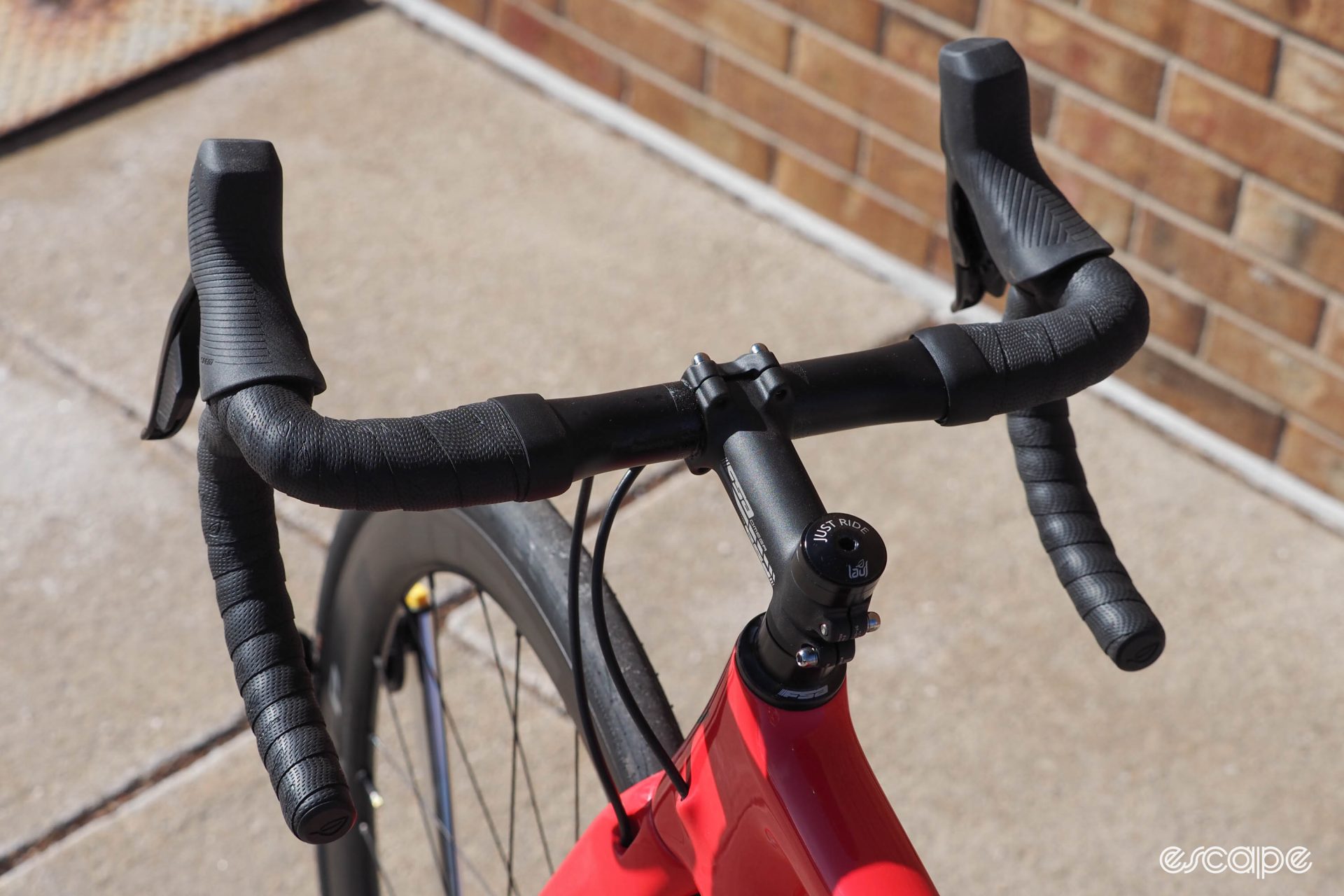
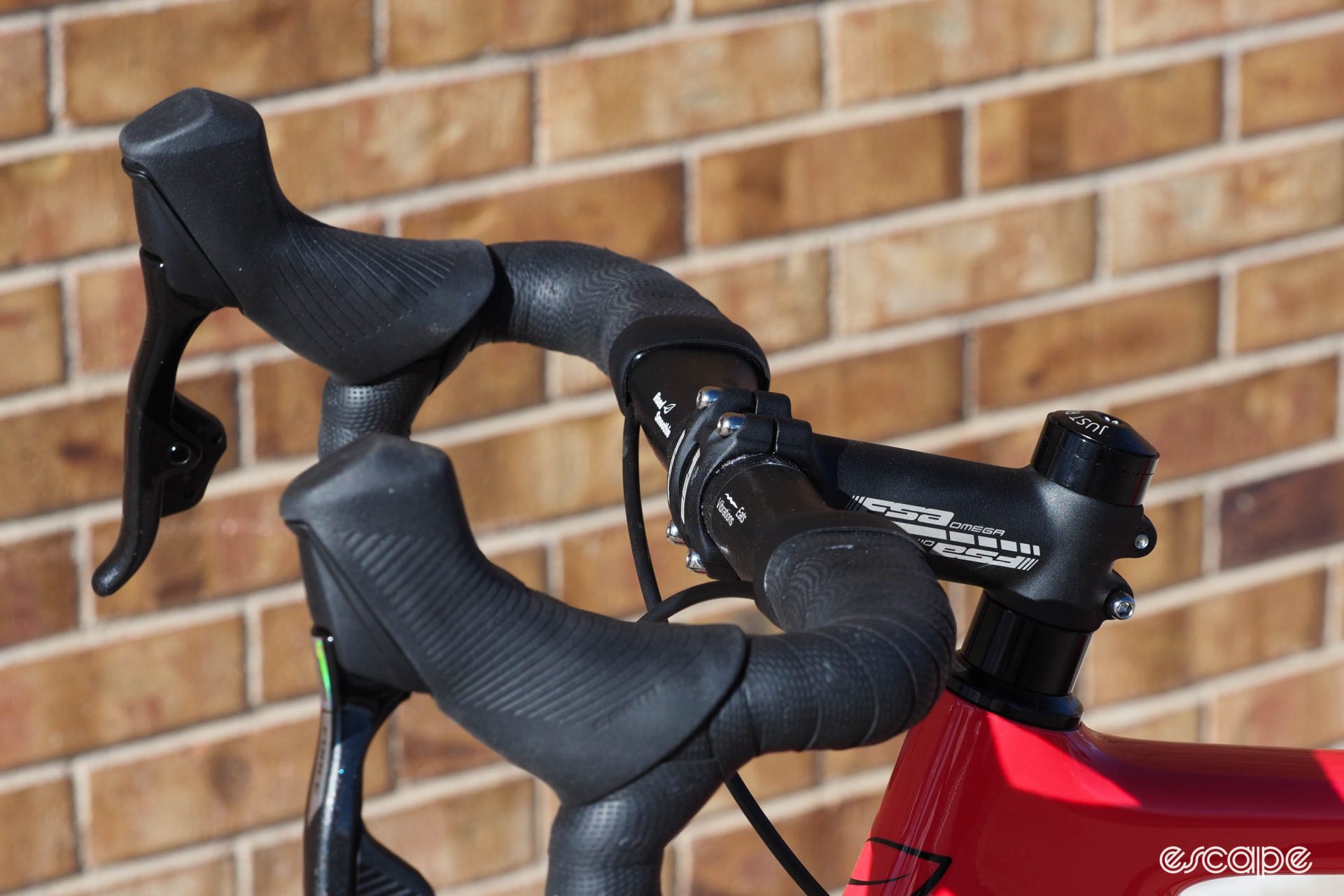
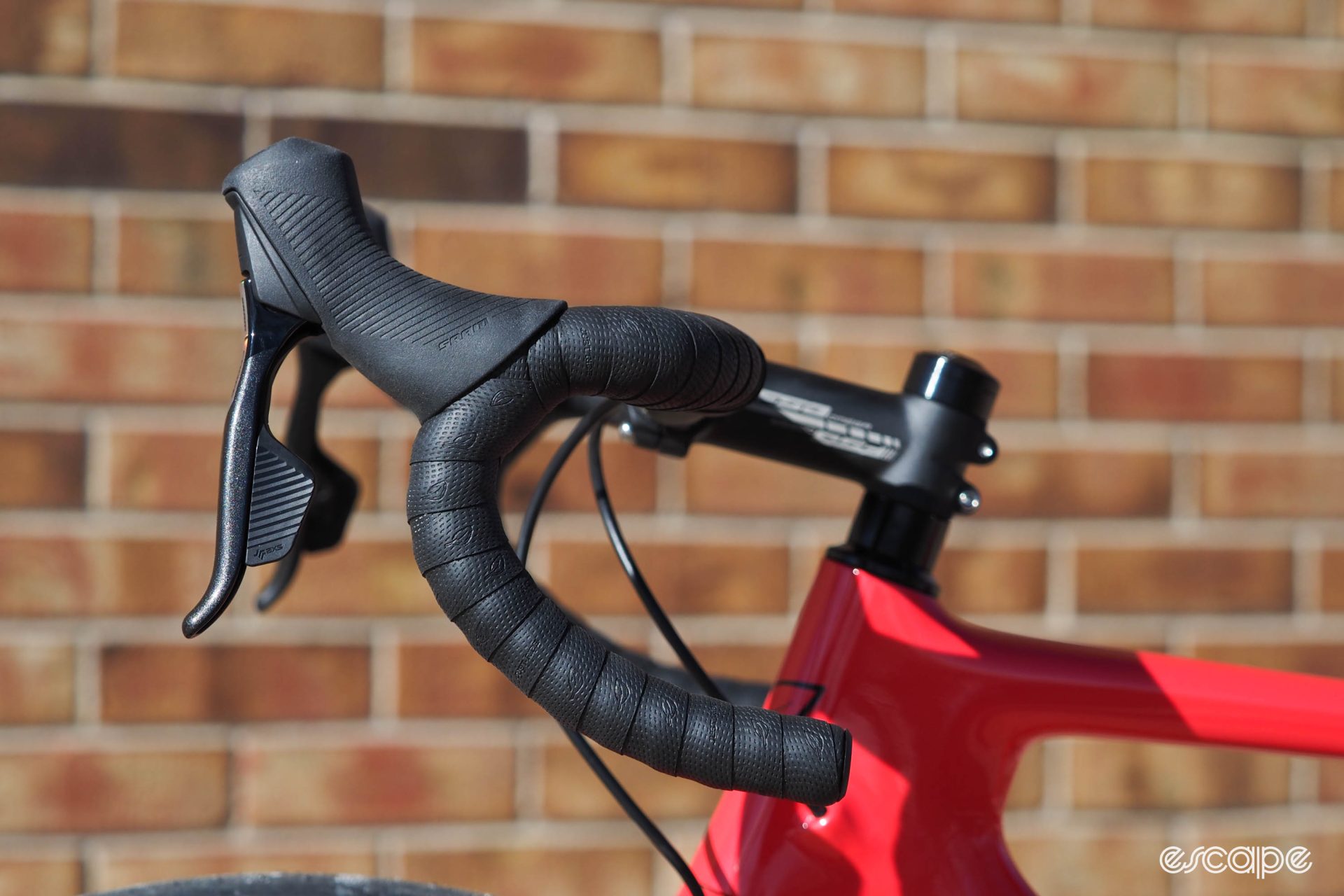
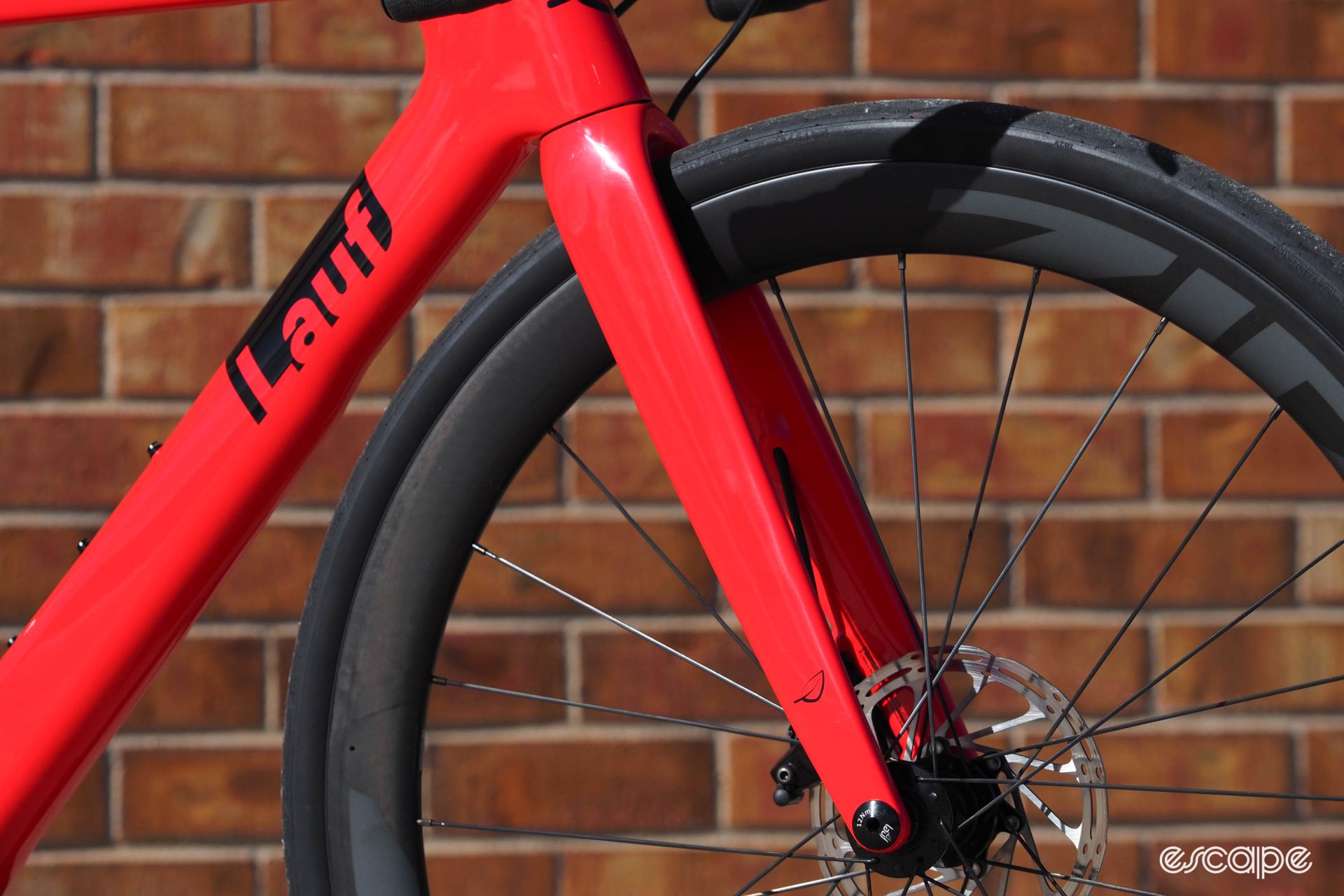
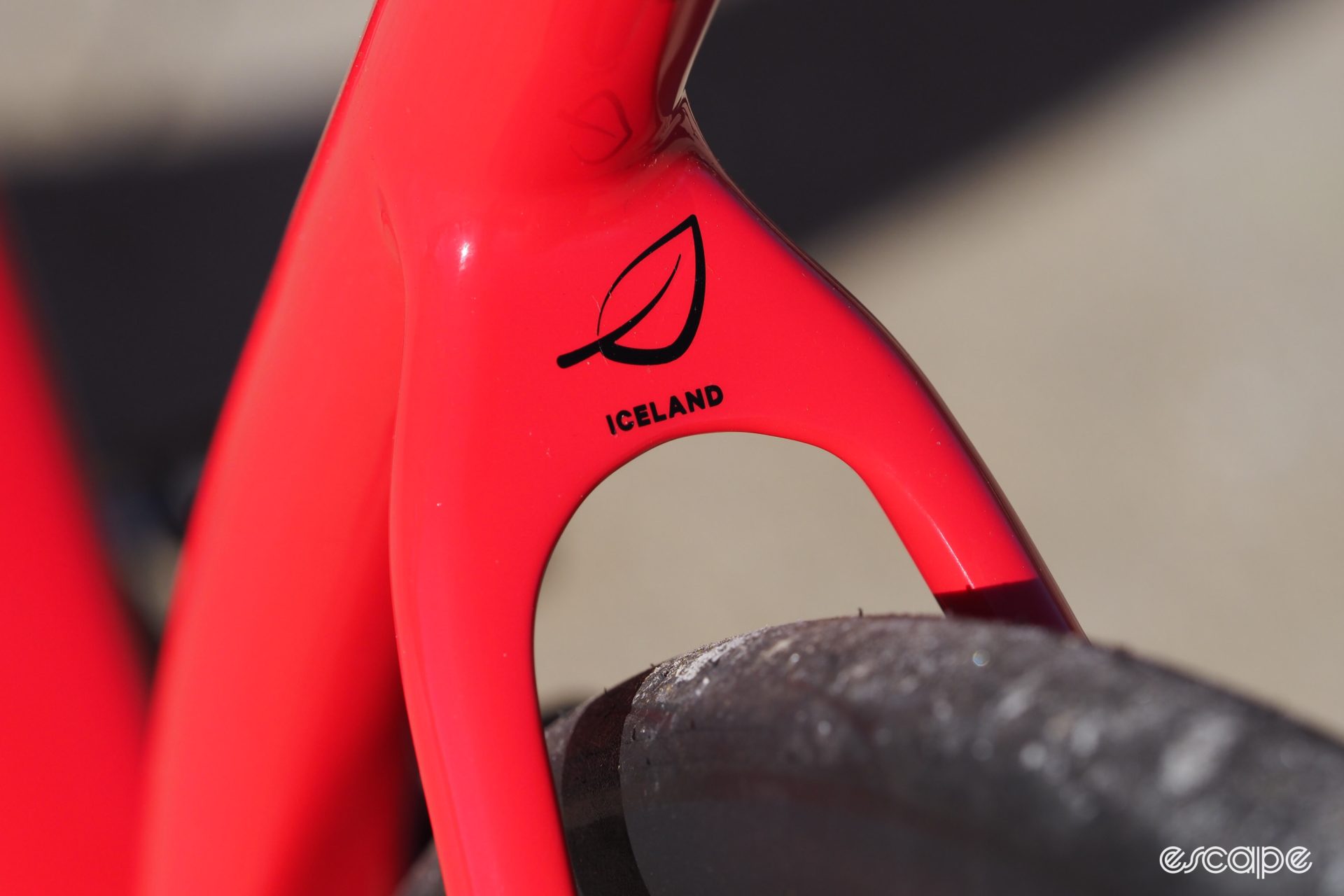

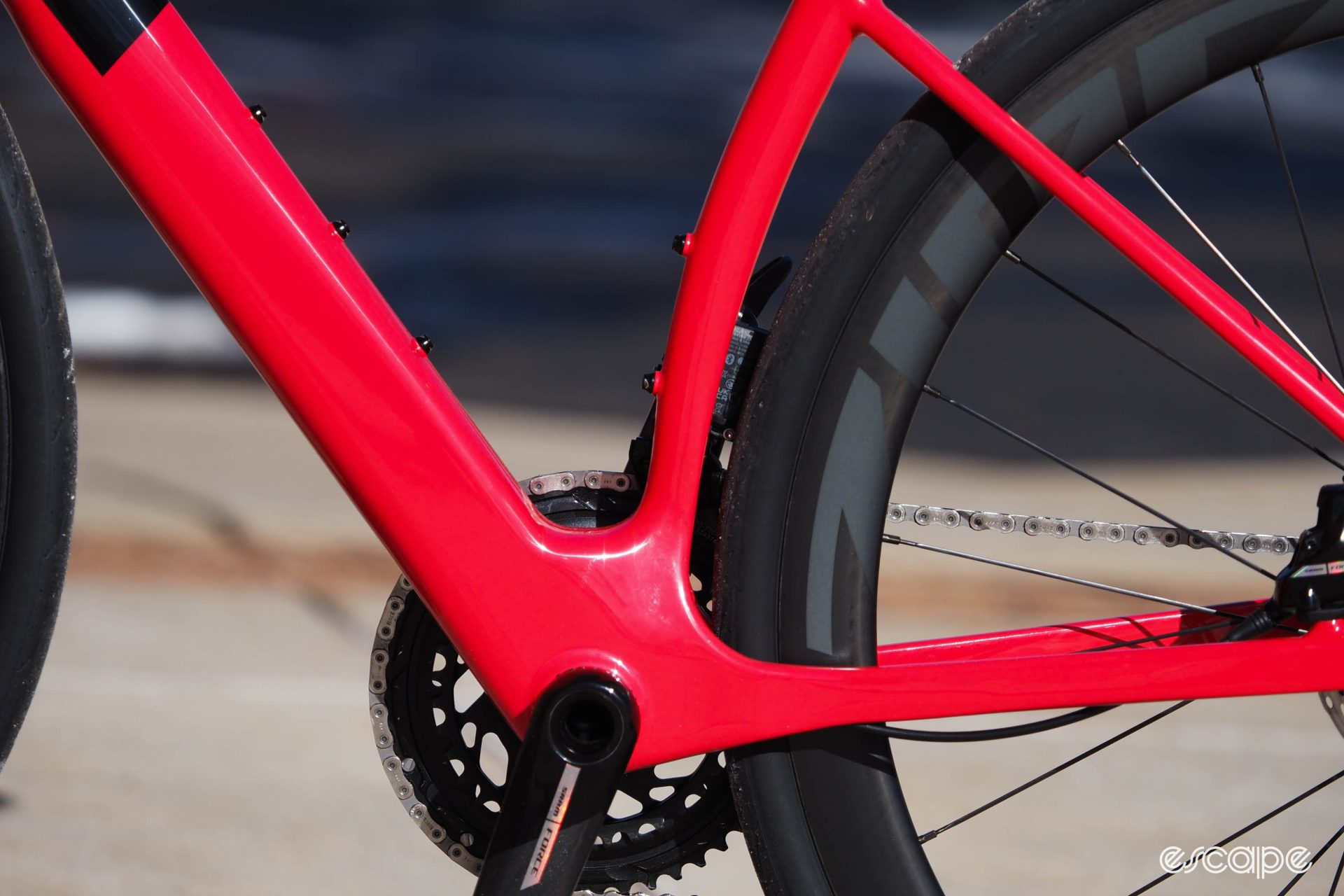

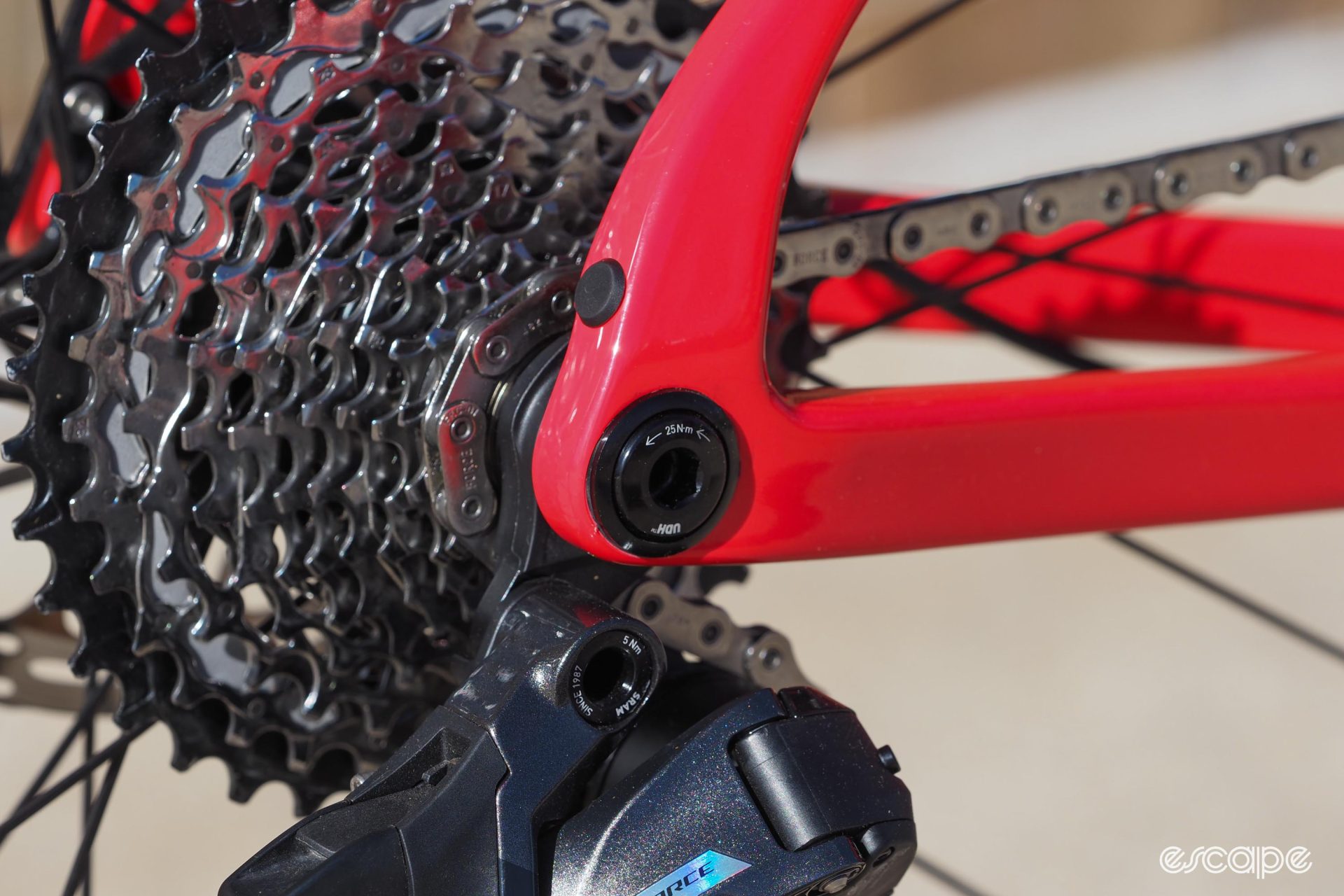
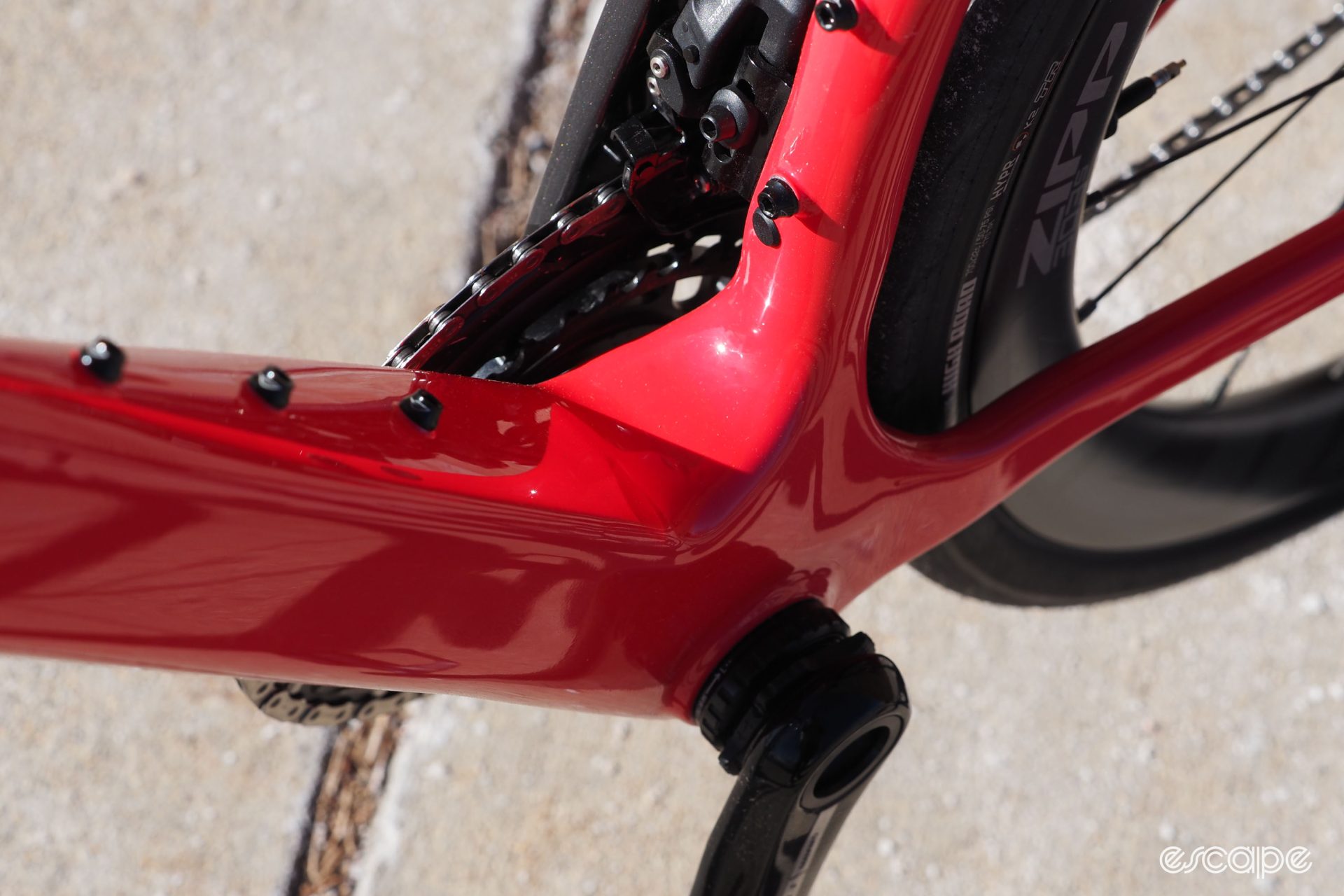
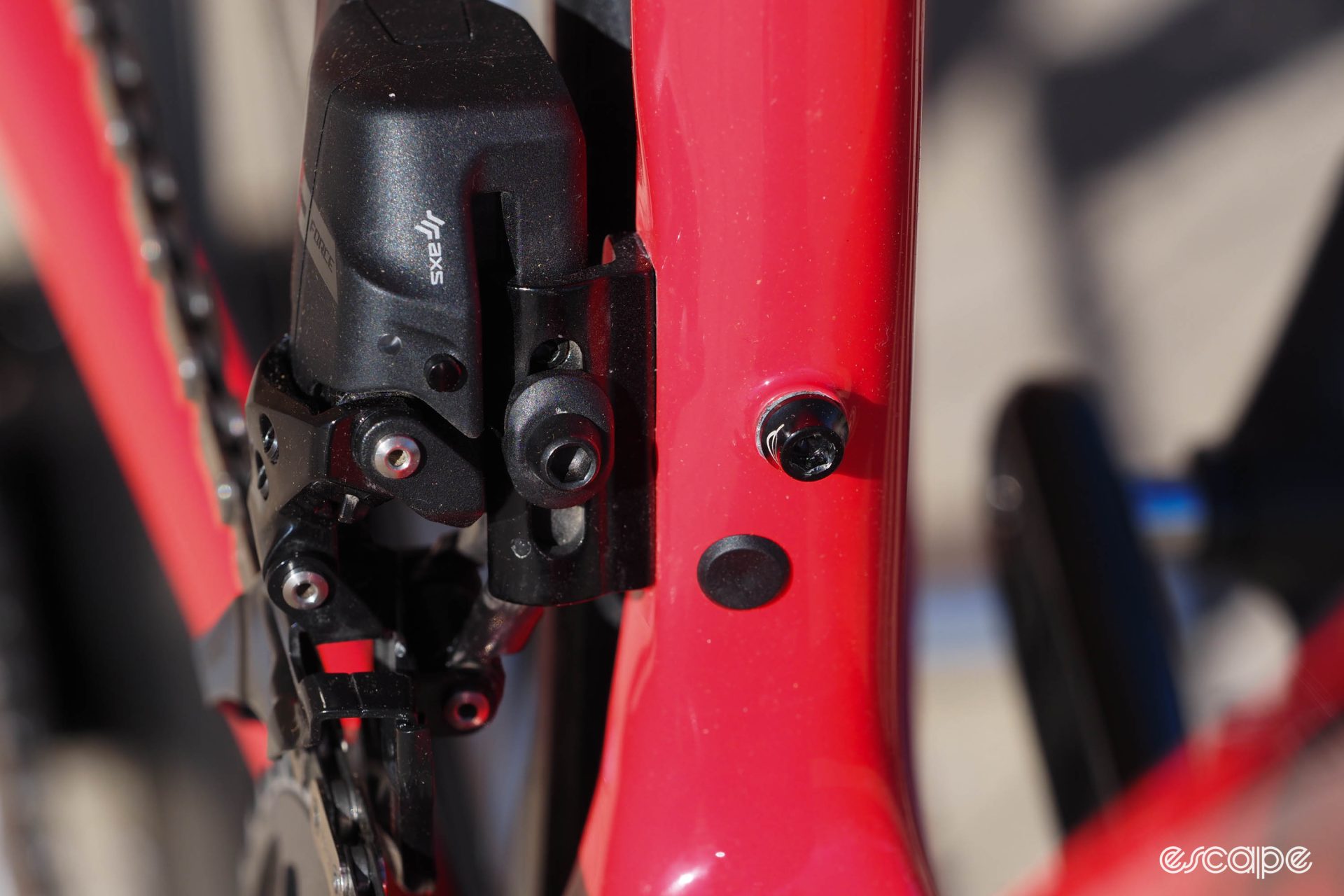
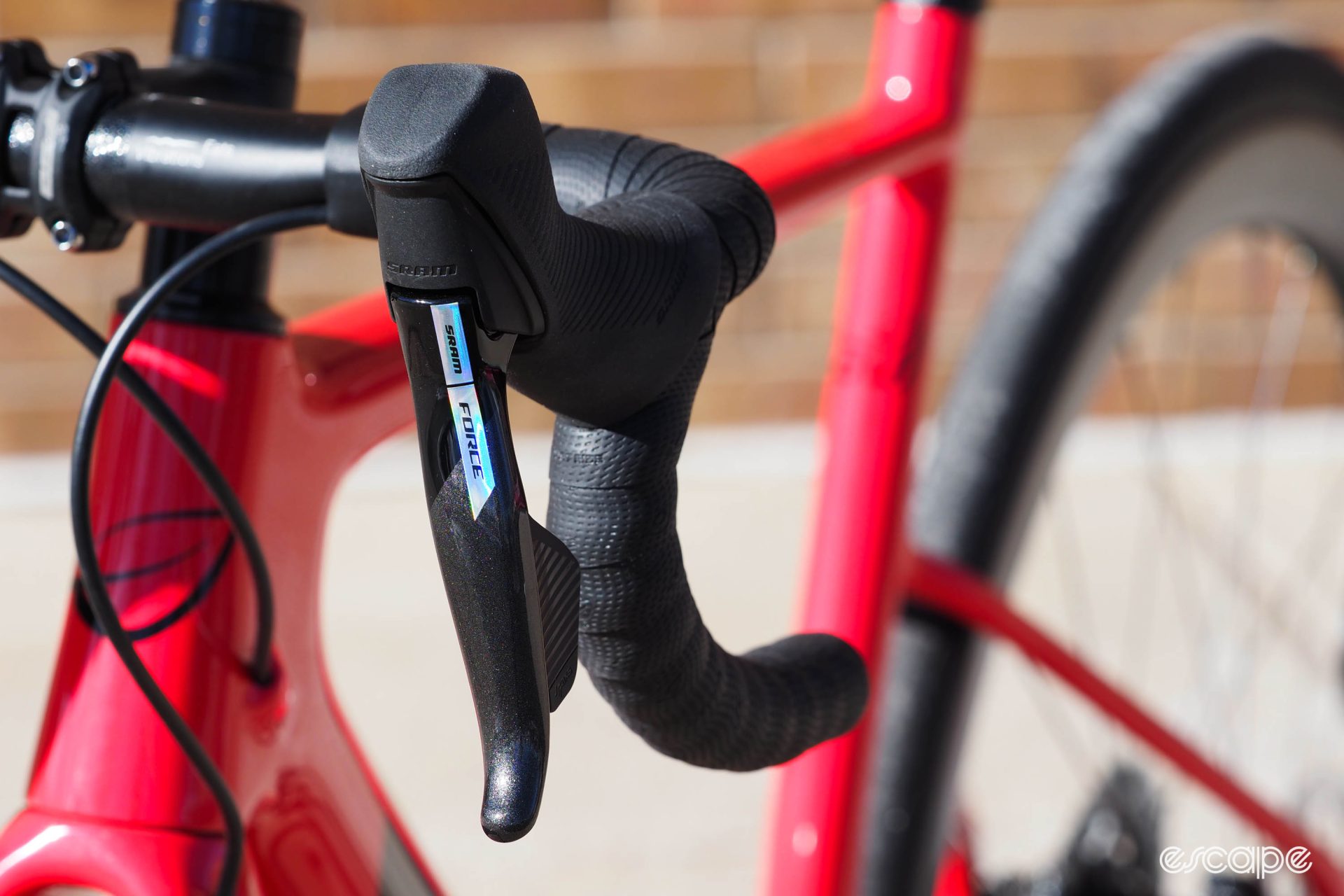
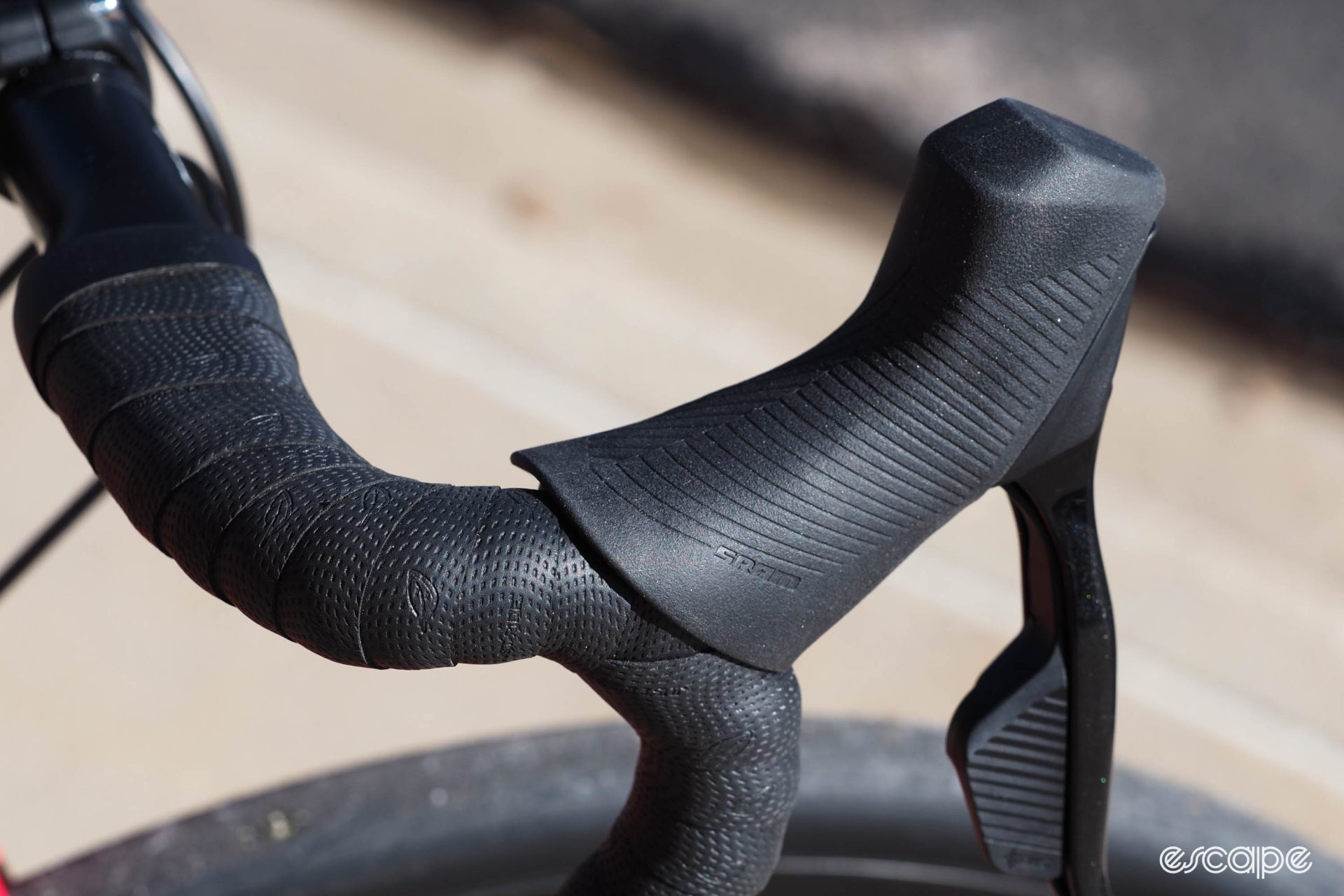
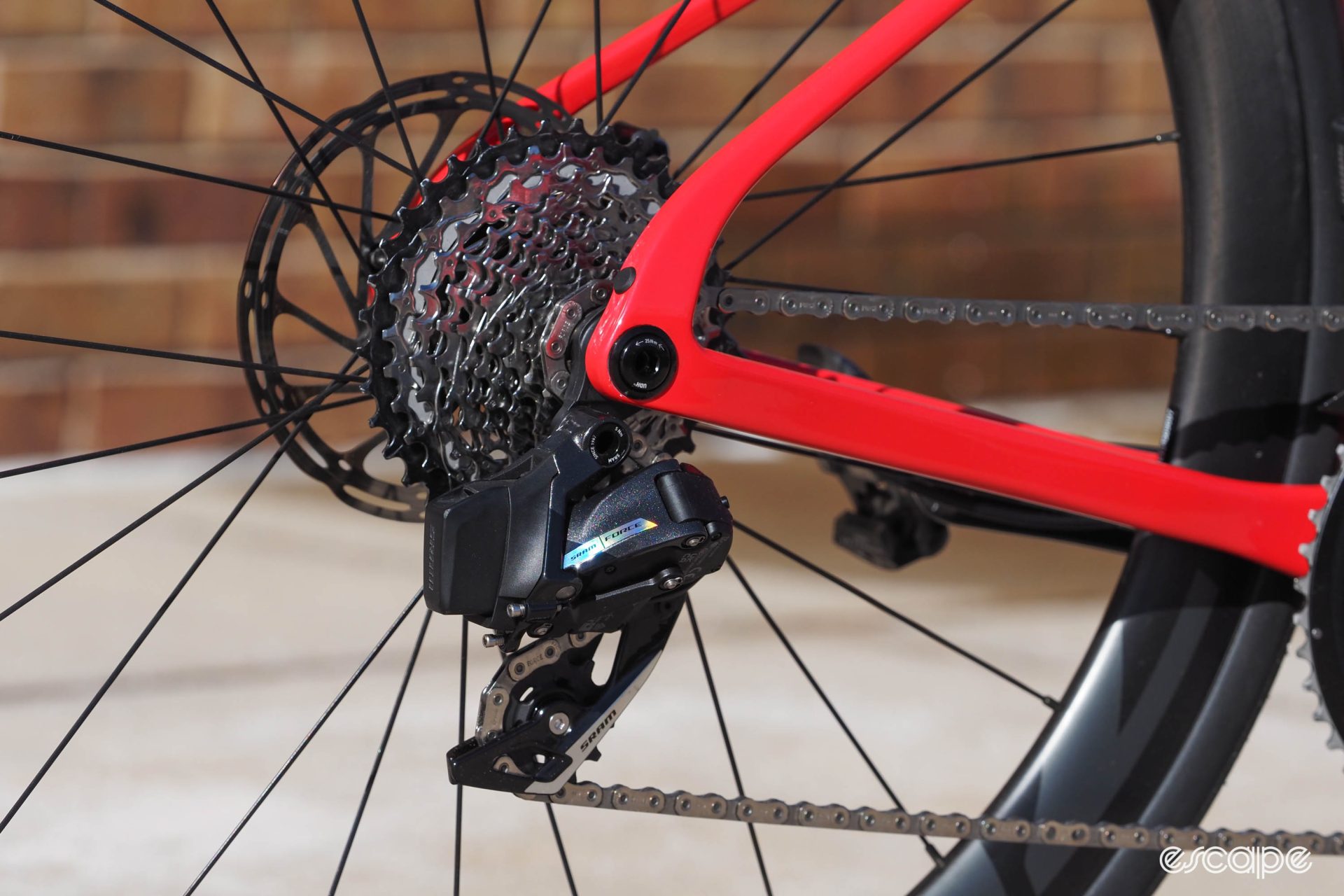
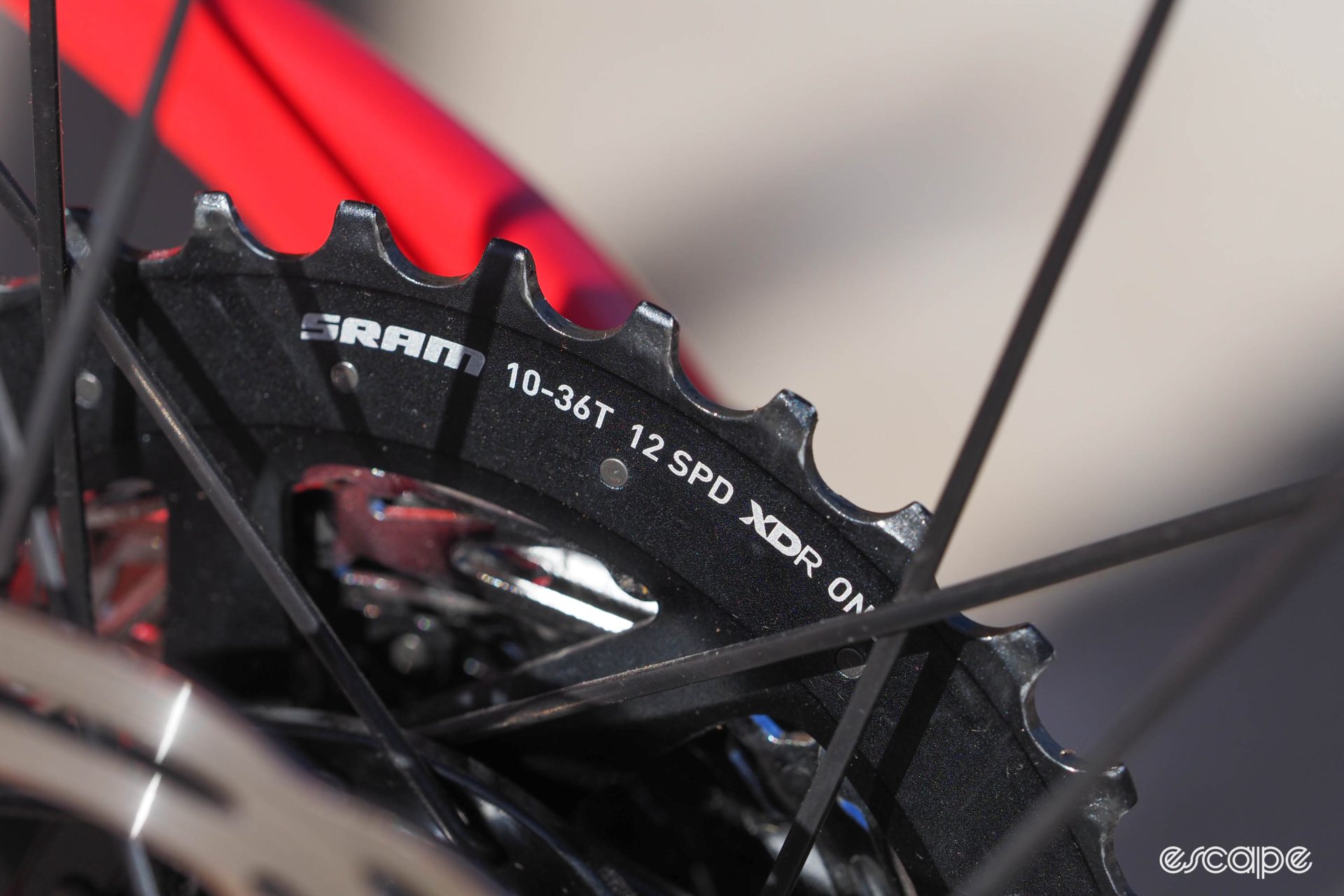
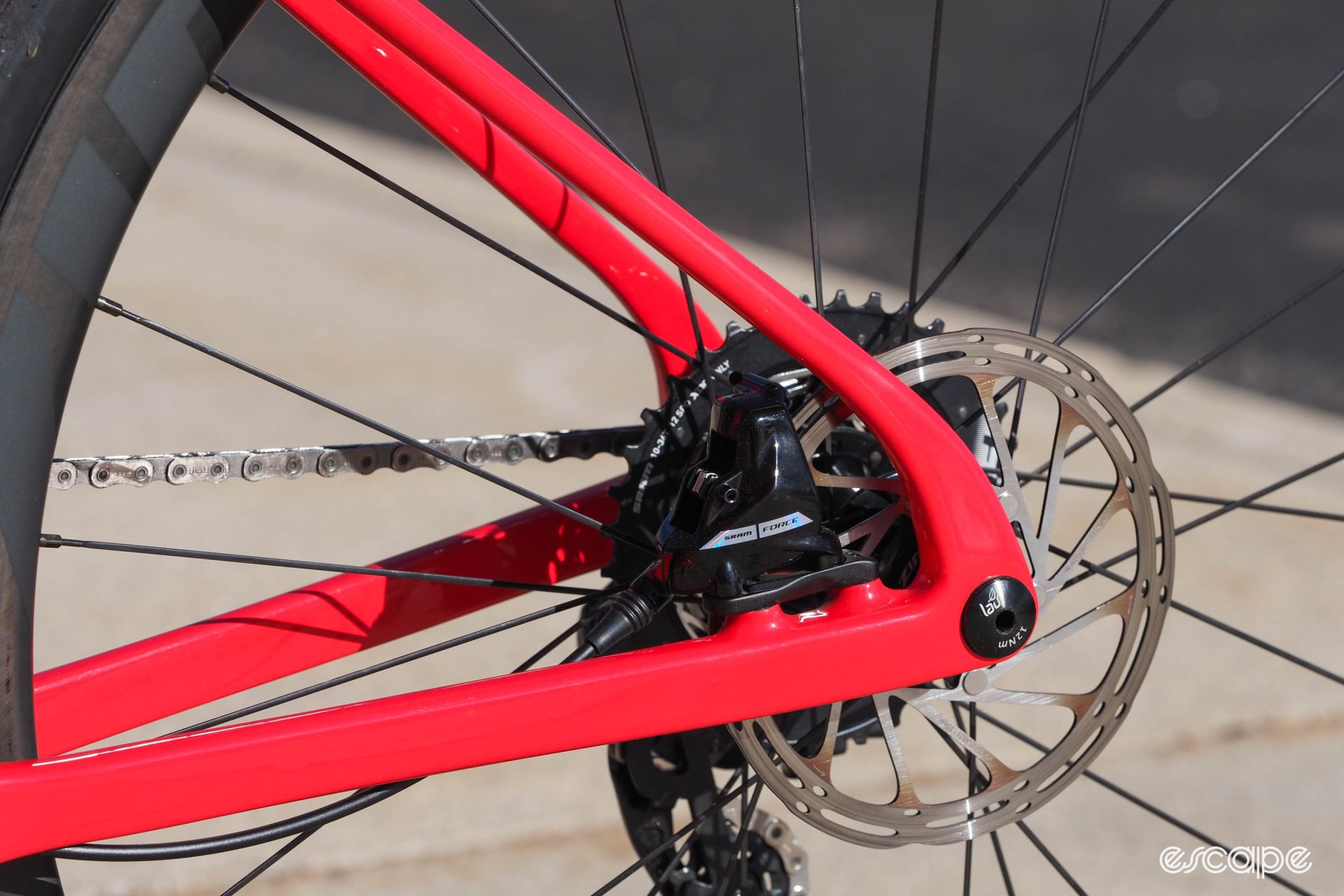
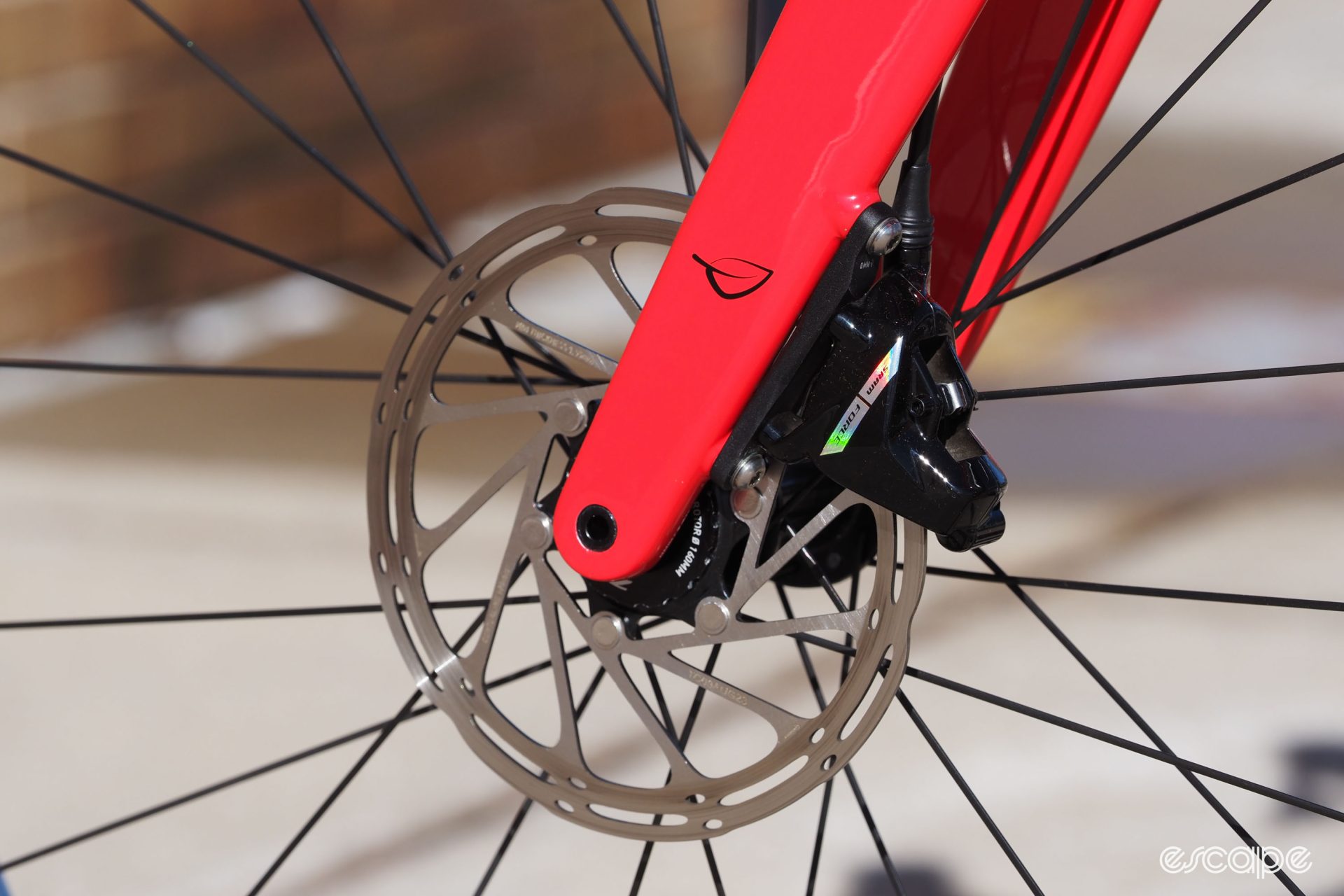
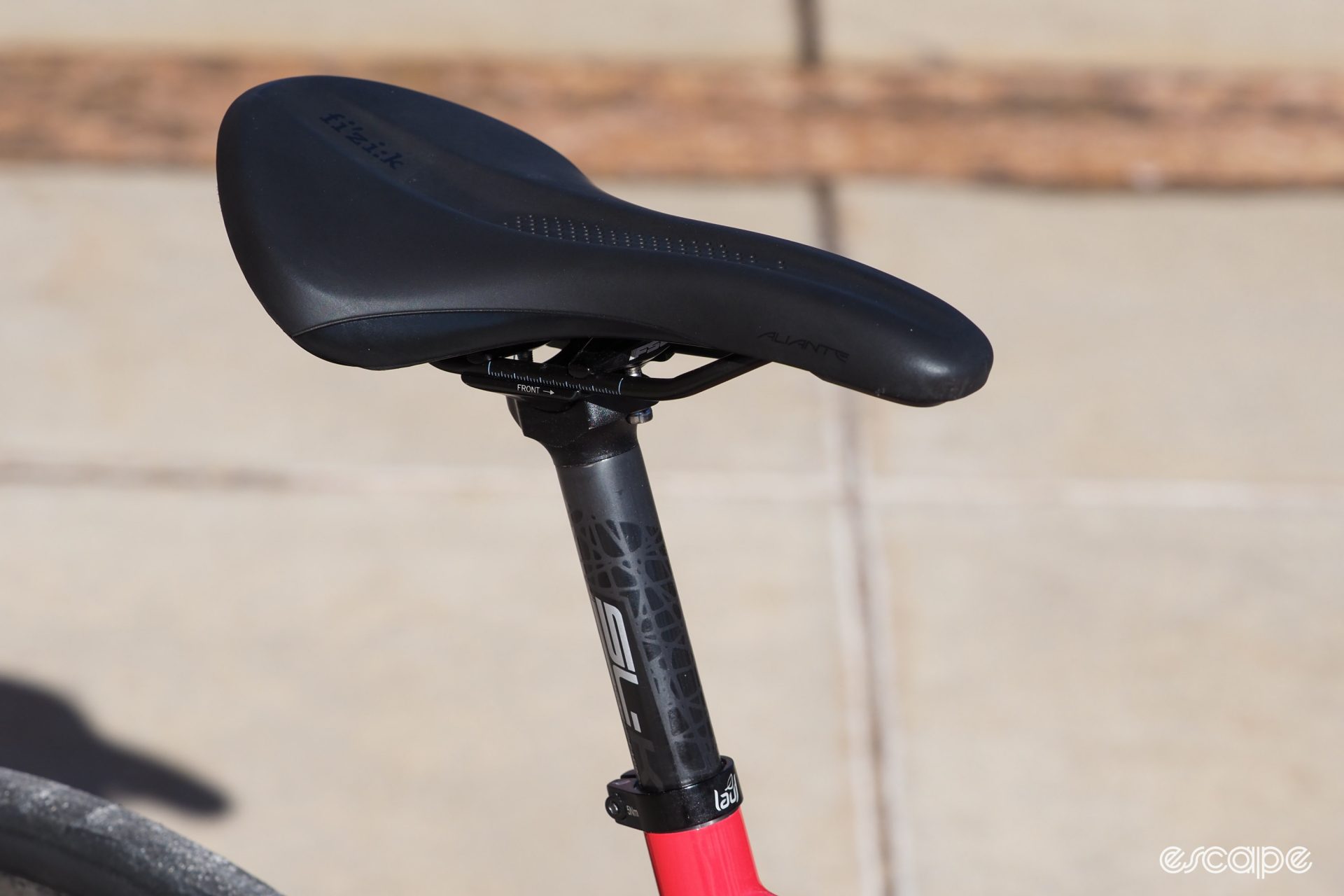
Did we do a good job with this story?
